|
Coral warfare/shading is a becoming more and more of an issue as you would expect for any reef tank approaching 3 years of age. Well perhaps not if the tank had been sensibly/lightly stocked but I guess this hasn't happened. Common sense seems to fly out of the window where myself and reef tanks are concerned. Most of what I'm going to post is kind of good really. Generally the corals are growing well but there are some that are losing the battle for survival. The Stylophora needs regular trimming to prevent it from growing up to and touching the left hand glass wall. Its base continues to expand and kills off areas of contact with two neighbouring Montipora as it goes. It has also (along with the Pinnigorgia gorgonian) almost completely shaded out the Beach Bum Montipora. The Beach bum is fading away and there is nothing I can do about it, it's pretty much impossible to relocate. I try not to dwell on this fact too much, it's too painful. Big mistake. Big. HUGE! I removed most of the green plating Montipora a while ago but it's making a comeback and shading the corals below again. I should never have introduced a frag of this in the first place, I just knew it would end up causing issues in a small tank but it was free and I just couldn't throw it away. On the plus side I must admit it is a lovely vibrant green colour. The encrusting 'Superman' Montipora is possibly worse than the green plating Monti, I am definitely in need of some marine Kryptonite for this particular coral. At one point it grew up along one side of the clam till the Crocea decided enough was enough and forced its shell open wide enough to snap a good chunk of the the Montipora right off. The Superman Monti also kills any Seriatopora hysterix it touches and has encrusted over nearby Acropora like they were nothing but bare rock. Interestingly it has actually run out of rock space to the rear and has started growing out in a thick plate like formation instead. I grudgingly accepted the loss of the purple tipped Acro frags to the Superman as they were not thriving anyway (due to the presence of red bugs) but it was harder to take the potential loss of the Acropora gomezi. Despite the parasitic bugs, the A. gomezi still showed nice colouration, not what it should look like under normal conditions but still nice. For months I gritted my teeth and watched this Acro be overgrown, but right at the last minute I decided to frag off the remaining two branch tips. I fixed both of them to the same frag tile and plonked it on the sand. A quick survey with the magnifying glass showed me that the tiny A. gomezi frags are still providing a home/food to the red bugs. I could remove and dip them (repeatedly if needed) but if the bugs are present elsewhere in the system then they will just become reinfested again. The frags have encrusted on to the tile but that's about all they've done at this point. One of the branch tips had a close encounter with the Scolymia thanks to a hermit crab, and got stripped. It's almost recovered bar for a tiny bit of algae covered skeleton at the very end. You can see one red bug highlighted but the arrow in the photo below. The only other Acropora species remaining in the tank is A. hyacinthus (aka Red Planet), I have yet to discover any red bugs on it but that doesn't mean there aren't any lurking out of sight. Interestingly this Acro has been looking better recently colourwise, it's actually starting to look red once more, well pink at the very least. The Scolymia continues to look good. It needs to be moved in the not too distant future as the Favia behind is creeping ever closer. I can't afford for those two to meet! Knowing my luck the (much) more expensive coral would be the loser if they clashed. The Favia has completely overrun the Cyphastrea that used to grow to the right of it and continues to bubble up towards the Acanthastrea to the left. There's been no full on attack as of yet. The Acanthastrea are surviving but not really thriving. I know that they prefer lower lighting conditions but the plating Montipora above is shading them too much at present. I have been trying to feed them to try and make up for it but 9 times out of 10 Rei the Yellow wrasse steals the food. The Oxypora keeps expanding ever so slowly, it is also somewhat lacking in light these days. The Utter Chaos zoanthids are a complete nightmare. They grow so fast and don't seem to be bothered by anything (at least nothing they have encountered in the tank so far). SPS corals are fair game, they just reach up shade out an area of coral until the flesh recedes and then they colonise the dead skeleton. I'm sure that this is a familiar story to many other reef keepers. Having never kept zoas before this is a new one on me. They have grown up the side of the clam and were beginning to reach over and shade the mantle before I decided to scrape them off. A temporary fix as they are encrusting again. To be fair it's just the Utter Chaos zoanthids that are causing a headache, the rest are much slower growing (aside from growing out onto the sand which is making it hard for Lurch the conch to navigate round the tank). The Heliofungia has grown to a lovely size but is really squashed up in the front left hand corner of the tank. It remains attached to the small rock and so cannot move around. This is possibly a good thing as I'm sure there would be carnage if it could scoot along the sand and relocate itself. It expanded so much that it was stinging the orange Dendrophyllia to the right of it. The Lobophyllia has been doing OK, it's really slow growing but since it's tucked away at the side of the tank with not great lighting then that's not exactly surprising. It started off with one head and now almost has three. Unfortunately one night it suddenly launched an all out attack on the Black sun coral. Before now it had been almost completely overgrown by the Utter Chao zoanthids and not retaliated but clearly the threat posed by the Black sun was a different matter. It stripped three branches of the sun overnight. Since the orange Dendrophyllia and black sun both needed moving, plus I (still) had the Balanophyllia sitting in the sump I decided space needed to be made for them elsewhere. In the end I pulled out 100+ Utter Chaos zoas, clipped a few branches of A. hyacinthus and removed all of Seriatpora hystrix. The Seri broke into pieces during removal and I decided to keep just a single piece and reposition it a little higher up. This left a space big enough to just about squeeze in the sun corals, now I have quite a nice little cluster of NPS corals on the right hand side of the tank. After spending over a year and a half in the sump the Balanophyllia is finally back in the DT once more and it's looking good, I don't know why I struggled with it so much. I wonder if perhaps it had some sort of infection that caused the flesh to recede before. It's good to see it back to full health (fingers crossed). I'm also thrilled that the accompanying hitchhiker bivalve is still alive too, I have no idea what that is eating but it must be filtering out enough as it has grown larger since introduction. The yellow Dendrophyllia remains in place next to the Heliofungia, it has encrusted onto the rock work so I'm not going to mess with it. Eventually I expect it too will be stung but that's a problem for the future. In just over a year this Dendro has increased from 3 to 15 separate heads with another forming. Such a lovely looking coral. The Pinnigorgia gorgonian goes from strength to strength, it grows so fast and always fully extends its polyps. I have cut off a number of branches of it already and need to trim it some more. The Muricea and Plexaurella gorgonians are much slower growing tucked away at the back of the tank. That's it for now, I will post an updated full tank shot in a few days' time.
0 Comments
Now for the coral round up starting with LPS. The Favia (Gonastrea sp.?) was such a tiny frag when first introduced, just three heads and now who knows how many there are. It has completely dominated the rock on which it was placed and has even expanded on to the sand on the left-hand side. There used to be a gap between the left and right rock structures that was wide enough for the conch to easily pass through but it's gone completely now. I fear that there will be a huge fight soon between it and the Acanthastrea. I did catch the two in contact one morning with mesentarial filaments extended, I'm not sure who instigated it but both survived the encounter and most of the time they coexist nail bitingly close together as seen in the photo below. Neither can be moved as they are well and truely welded to the rockwork. Unfortunately the Cyphastrea to the right of the Favia has not fared so well. A tiny amount is still hanging on right next to the sand (hidden behind the Scolymia) but it's only a question of time before it's overgrown entirely, again it cannot be moved as it's also encrusted onto the rock work. Acanthastrea #2 (lava glow) is slowly getting bigger but is shaded at the back so can really only grow forward. It's looking much better since I fragged the green plating Montipora that's growing above it. I haven't bothered to feed it much recently because the wrasses steal 99% of the food before it's ingested. The original Acantastrea (#1) was really struggling due to lack of light and that was the main impetus for me to take the cutters to the green Montipora. I am happy to say that it's looking a bit better now and starting to regain some colouration. I have been trying to boost it by feeding it but again it's hard to sneak some to it without the beady eyes of the wrasses noticing. The Heliofungia is growing huge now and has filled the left-hand corner of the tank. I can't even fit the whole coral in when taking a photo from above using the lens dipper. When extended the tentacles sway worryingly close to the the orange Dendrophyllia, I haven't seen them make contact yet but the nearest Dendro head has looked damaged so I'm guessing it must have happened at some point. I thought I had killed the Heliofungia recently when I accidentally dropped the algae magnet on top of it but apart from looking shrivelled for a day it seems to have bounced back again (touch wood!) The baby buds continue to do well, despite them being shaded out by 'Mum'. I don't know how many there are but they completely ring the base of the coral. It would be nice if they detached but show no signs of doing so, I daren't try to frag them off as knowing my luck I'd kill the lot of them and 'Mum' too. The Oxypora is a coral that just is, it sits there minding its own buisness, silently growing larger bit by tiny bit. To be honest it's not in the best position and has plated out into and interesting shape to the rear, growing upwards along side the gorgonian. The Scolymia is the coral that immediately draws your eye, I love it and it's so easy to care for. I'm not sure if it's growing but it certainly expands much more than it did on first introduction. I feed it every now and again at night when its tentacles extend. I have seen videos of other Scolys that feed during the daylight hours but mine never shows a single tentacle when the lights are on, perhaps mine can be trained to do so but there's not much point since the ever patrolling wrasses would spoil my fun. I am forever vigilant to its well being and do sometimes worry when, on the occasional day, it's not as big. It's the most I've ever spent on a coral so losing it would be a hard blow. Then it'd be no more Scolys for me. The Lobophyllia was the first LPS coral to be added to the tank (along with Acan #1). Initially it was placed on the sand in the middle of the tank but I was advised to move it due to its aggressive nature (stinging all other corals in the vicinity) so I moved it to the front left-hand corner and then the right-hand corner but no matter where it went the snails kept knocking it over. In the end I had to glue it down to the base rock in the rear right-hand corner of the tank, tucked away from pretty much everything. The lighting is not great down there and it's got worse since the corals have 'grown in' so it's not surprising that growth has been minimal. Over the months (years now) the Utter Chaos zoanthids have marched their way ever closer to it (and everything else for that matter!) I fully expected the uber aggressive Lobo to keep them in check but no, when contact was finally made the Lobo did nothing at all. So the zoanthids just kept coming until the whole left hand side of the coral was hidden under a matt of polyps. Eventually I took pity on the Lobo and removed the encroaching zoanthids it was only then that I discovered the that Lobo had split into two separate heads. This coral is clearly made of tough stuff! The most problematical of all of my LPS corals has been the Balanophyllia. It was the first non-photosynthetic coral that I introduced to this tank, I chose it mainly because it was a single head hence small and I'd never kept one before (I had kept Tubastraea sp. in the past and found them easy to care for). It started off looking fantastic but gradually the tentacles would extend less and less and the flesh began to recede at the base. I tried everything that I could think of to make it happy. I moved it to different locations in the tank in case it was a lighting issue (too bright perhaps?) or maybe it was flow related. I tried feeding it more frequently and also less frequently but still it continued to decline. Eventually I pulled it from the DT and sat it on a frag rack in the sump so that I could take better care of it. However as the months passed by still nothing much changed, it just hung on and looked rather sad. I tried all sorts of different food stuffs in the hope of stimulating it to open as it once did but the tentacles remained short and stubby or often absent entirely. I must admit there were periods when I would ignore it entirely but I always came back to it determined not to give up. Finally after much chopping and changing I settled on a different feeding regimen, instead of offering it small amounts of food regularly (daily or every other day) I changed to offering food only twice a week at which times I would swamp it. On Wednesdays I would offer it a good amount of LPS pellets and on Sundays it would get a smorgasbord of frozen food, reef roids and coral frenzy all soaked in Selcon. It now looks better than it has done for absolutely ages (I've had it for just under two years now), the change was gradual, the tentacles extend a reasonable amount and recession has stopped, in fact I think it may have even grown a little. The bulge on the right-hand side of the head in the photo below is where the tip of the coral used to be. At one time the flesh receded right to the top and it lost tentacles on one side. Now it has a full ring of tentacles that extend, if not as much as before but definitely much improved. The colouration isn't as good as it once was so I assume I still haven't got the nutrition quite right but hey baby steps. As you can see the hitchhiking bivalve that came attached to the base of the coral is still alive and growing. In addition, the rock base has gained quite a few 'friends'. There are a number of ball anemones, sponges, fan worms, vermitid snails (of course) and even three baby Tubastrea polyps that have settled out on to the base. I'm at the point now where I'm thinking of introducing the coral back into the DT but hesitant to do so in case it starts to fade once more. In comparison to the Balanophyllia the Sun coral (Tubastrea sp.) is easy to care for, feed it and it will grow (and reproduce!), it's released planulae larvae more times than I care to mention. The whole tank is littered with baby sun polyps now. They have settled out all over the rocks, on snail shells, in the weir, on the pump heads and even on the siporax in the sump to mention a few places. There are now too many to target feed so I am leaving them to fend for themselves. I haven't been feeding every head of the main colony like I used to so it may be a little smaller than it used to be. At least that's what it looks like when I compare it to the older photos, it's either that or it wasn't fully extended when I took the most recent photo. From what I've read the heads do not share nutrition so if one doesn't get fed it fades away; I'm not exactly sure how true that actually is however. The first baby sun polyp that I discovered in August 2017 is just over 1.5 years old, wow! It's still just a single head but seems to have developed a calcified base now. To be honest I'm quite surprised it's still alive as I haven't target fed it for ages, it's probably been over a year since I offered it food. It just got too difficult with the Seriatopora growing above it and also it became obscured by (those rather annoying) Utter Chaos zoanthids. Clearly it must be in a position to be able to capture enough food to keep it going. The black sun coral (Tubastrea micrantha) seems to have well and truly settled in to life in my tank. It looks really amazing at night, I know that for most people that's not their cup of tea but come on it does look cool, right? I have seen it start to tentatively extend some tentacles during the day after the fish have been fed so if I offered some food to it directly then I think it would extend during the day. If only it weren't for those pesky wrasse, lol. I couldn't say if it has developed any new heads yet but the flesh has been encrusting downwards to the rock on which it's attached so I take that to be a good sign. Amazingly a while back I found a couple of baby black sun polyps lying in the sump. I think these have developed from bits of flesh that fell off the main coral after my disastrous fragging attempt. I thought about trying to rescue them and fix them to a small rock but decided I had enough mouths to worry about already so they will have to take their chances in the sump. The two Dendrophyllia are doing great, popping out new heads slowly but surely. The yellow one started with 3 heads and now has 14 and the orange one has gone from 3 to 9. Unfortunately there is a small problem with the orange one as I mentioned above, the head of the Dendro closest to the Heliofungia does not fully expand its tentacles any more and sometimes it looks a bit damaged. I should move one of them but the Heliofungia is too large to go anywhere else and the Dendro has just grown down and made contact with the rockwork plus it looks fantastic alongside the yellow one and there's not much space elsewhere for it either, arrggh! That's it for now, I think I'll tackle the inverts update next before moving on to the rest of the corals.
First the not so good news, I think it's time to hold my hands up and admit defeat when it comes to growing Acropora in this tank. As soon I discovered the first red bug I feared the worst and that certainly appears to have been the case. I had hoped that the corals would be able to survive the parasitisation and for a while they did, growth was slow but steady and colouration looked OK but that's certainly not the case now. To recap, patient zero (the frag that initially infected the tank) was removed leaving a small amount of encrusted base in the tank, it looked like was going to recover and regrow but progress was so slow that the neighbouring Montipora (Superman) completely overgrew it. The second casualty was the Purple-tipped Acro, this suffered from STN (slow tissue necrosis) and had to be fragged. The remaining frags encrusted onto the rockwork but again showed little upward growth and were in time also overgrown by the Superman Montipora. A tiny bit of encrusted base still remains but I fully expect it to fade away or be overgrown eventually. The A. loripes suffered from RTN (rapid tissue necrosis) whilst I was on holiday and the Red Dragon joined it shortly after. The A. echinata frag also suffered from STN and was fragged but the stress of it being chopped up caused the remaining branch to strip overnight. So this leaves me with Acro #1 which has browned out and is soon going be completely overshadowed by the green plating Montipora (I never actually wanted any plating Montipora in this tank but this was a freebie coral that came in along with an order of encrusting forms and I, like an idiot, assumed it was encrusting one too, duh!). I also still have Acro #3 which is struggling for space next to the large gorgonian and A. gomezi. At first glance the A. gomezi looks OK but is actually covered with red bugs and has put in no upwards growth since its introduction almost 18 months ago!! There is one Acro however which appears unaffected by the Red bugs and that is the A. hyacinthus (aka Red Planet), this has grown relatively well and in fact has to be fragged because it keeps growing too close to the front glass. I cannot find any trace of red bugs on this coral. So there you go, it's no more Acropora for me, perhaps I'll be able to restock one day when the remaining Acros have gone and the red bugs have died out without a coral on which to host. In case there was something going on with the water quality that I wasn't aware of, I did send off for an ICP analysis but nothing stood out as being particularly troublesome. Strontium, Barium and Manganese were on the low side. Nitrate and phosphate were 3.02mg/l and 0.09mg/l respectively which is the highest they have been but not excessively high, I think (maybe someone may correct me?). Still, I have decided to run a little Rowaphos to bring the phosphate level down a touch. Full results can be seen via the link below. lab.atiaquaristik.com//share/b48ad381479dbd88fe1c Now for the better news the rest of the livestock for the most part appears to be doing fine. The Stylophora, Montipora and Seriatopora are all growing great (a bit too great actually). The lovely beach bum Montipora is thankfully still with me and finally showing signs of growth too. Unfortunately it's becoming harder and harder to see with the ever increasing Stylophora situated to the left of it and monster green plating Montipora to the front. Very poor planning on my part! I can just about catch a glimpse of it from the top but I suspect that won't last long. I would really love to move it to somewhere viewable but I doubt that I could get it off the rock even if I had somewhere to move it to which I certainly don't. The Superman Montipora has completely filled in the space I gave it and is also growing up the side of the Crocea clam shell. I'm not sure if I should be worried about this development or not. I hope it doesn't impede the opening and closing of the clam. I had to remove the original frag of the Cyphastrea as the Favia next door was remorselessly attacking it every night and anyway I never liked the look of the horrible frag plug. Since its removal the remaining encrusted part has been doing much better, it's still very close to the Favia but seems to have fallen under the radar for the time being. As for the Lobophyllia I had always been led to believe that they are super aggressive corals but the Utter Chaos zoanthids are creeping ever closer without any form of retaliation at all. I had rather hoped that it would keep them in their place. Sadly the Sunrise Goniopora frag is not doing very well at all. To begin with, it looked great and was encrusting on to the rock it was placed but then it started to lose colour and not extend as much. I tried moving it to the back of the tank where it was less bright but that didn't seem to make a difference. I can only assume that it hasn't been finding enough food, I do target feed it Reef Roids and Goniopower but generally not more than once a week. I am ever conscious of the size of the tank and nutrient levels. Here are a few recent photos: Now on to the new stuff! With the loss of a few of the SPS corals I was needing a pick me up and a new coral (or two as it happens) does the job. For ages I had fancied adding a short tentacled Fungia to the tank and since we had a trip to London planned a couple of weeks ago, a visit to Advanced Aquarium Consultancy was in order. I couldn't believe my luck when I found out the night before that they were having a sale on some of their corals. I thought "fantastic", I can save some money for a change, lol! However instead of saving money I spent more as I ended up buying a Scolymia instead of a Fungia. Oops! It's funny how that happens when shopping for corals. Needless to say I could have spent more, waaayy more, thank goodness I live too far away for AAC to be my LFS. Apparently it's a Reverse Bleeding Apple Scoly (more red colouration than green) and here it is after 4 days. I've been watching it like a hawk, worrying about its health because frankly it's the most I've ever paid for a coral even with 20% off. Oh but it's so pretty. I had to remove 4 Asterina sp. starfish from the base of the coral after acclimation, I felt bad about killing them but really, I have enough pest issues to deal with as it is. It's a shame because close up they are quite nice to look at and I love starfish but I can't take the chance that they may become a nuisance. Although it would be cool to have a Harlequin shrimp... Here is the Scoly in night feeding mode. Just after the addition of the Scolymia I discovered an online seller was offering frags of Dendrophyllia sp. Now I really love sun corals (well, non-photosynthetic corals in general) and my current Tubastrea is doing great so I convinced myself that I could squeeze in an itty bitty frag of a Dendro too. The coral was listed as yellow/red in colour with the polyps opening up in the day time as well as the night. However as you can see the coral is a uniform lemon yellow in colour with not a hint of red at all (unlike the one shown on the website). No matter though it looks healthy and really rather lovely, it opened up much faster than I expected and is taking in food already which is excellent. I can confirm in my vast experience of one week that it does indeed stay open during the day. I'm not convinced that it's a Dendrophyllia sp. however, it could alternatively be a branching Tubastrea sp. Only an examination of the skeleton will determine that for sure and since I'd really rather it didn't die I'll be content without a positive ID. Here's a full tank shot to end this update.
I went away this weekend and managed to find the time to visit a few not so local fish shops (as the reef-obsessed tend to do given the opportunity). In the 3rd shop I struck gold and located the Porcelain crab (Petrolisthes galathinus) I've been searching for since I first set the tank up. She is one of the hitchhiking species that are sometimes found in live rock. I used to have one of these peaceful filter feeding crabs in my old tank and knew I wanted one for this tank too. When I arrived back home everything in the tank seemed fine and my crab (a female according to the shape of her abdomen) was duly acclimated and introduced just before the lights went out.
This morning I eagerly rushed down to check on my new crab only to discover that the curse of the Red Spot Cardinalfish had struck again. Another one of them had died, this time I discovered the body, the Lobophyllia was trying its best to eat it! The meal turned to be too much for the small coral to stomach and I was able to remove the dead fish using a pair of tongs. It was at this time that I happened to notice a small shape lying on the carpet to the side of the tank. Closer inspection showed it to be Gordon my Whitecap goby, nooooooo! He had jumped out of the tank at sometime during the night. I do have a mesh lid on the top to prevent any jumpers but somehow he still managed to find a way out, he was a very small fish after all. There is no doubt in my mind that he jumped as a direct result of the persecution by the Nudus gobies. The female in particular went out of her way to terrorise him at every opportunity. I have no idea what will happen to Al the pistol shrimp now and I dare not introduce another Whitecap as the same thing could happen all over again. He's going to have to make do on his own from now on and I expect I won't see him nearly as much as when Gordon acted as lookout for him. I feel so very, very sad today. On the 18th April I relocated Charlie (or is it Charlize?) the hitchhiking crab from the DT to the refugium. After almost 4 weeks of no-show, today I discovered him (her?) alive and well in the jungle. I am chuffed, what a survivor! Also I've also been playing around with a new macro lens, starting with some of the easier corals to capture.
A better FTS (with less blurry fish hopefully) and some top-down photos of corals that I forgot to include in yesterday's update.
This tank is approaching the 6 month mark (on the 16th April). Wow, where has the time gone to? It's now well and truly in the 'spotty phase', the back glass is covered with spots of coralline algae and spirobid worms. I have scraped it once already and am now in two minds if I should do it again. Does it look natural or does it just make the tank look messy? I can't decide, answers on a postcard please. :o)
I've had to move the Lobophyllia yet again. The Lobo was very happy in its last spot but, darn it, the snails (Mr Conch I'm looking at you particularly!) just kept knocking it over no matter how hard I pushed it in to the sand. So now I've glued the base of the skeleton to the rock work on the right-hand side at the back. It's not great for viewing but at least it won't get damaged there. Fingers crossed that's the last time I have to move it! Acropora sp. #2 still appears to be red bug free and the PE looks good. Acropora sp. #3 is on the mend I think, to my eye there appear to be less blistering now. It's not completely out of the woods yet but I'm feeling a little more confident about its future. General coral colouration is not great but I'm not too concerned about that at this point. My mysterious hitchhiking crab has thankfully moved away from the S. hystrix and has set up home in the uppermost right hand rock. I still don't have a decent picture of him to show I'm afraid, he moves like lightning whenever I get close. So far he's not attacked or eaten anything that he shouldn't, I regularly observe him scraping at the rock work with his spoon shaped claws and he does a great job of keeping that area clean of algae and detritus. He has grown considerably and I am probably not helping matters by occasionally feeding him directly. I have tentatively identified him as Chlorodiella nigra which is a member of the Xanthidae crab family. According to my research they are generally fine when smaller but can become troublesome as they grow and their appetite increases. I am investigating removal options just in case..... Yesterday afternoon I introduced probably my last fishy additions for this tank, they are still settling in at the moment, pictures to follow hopefully later on in the week. For the most part the tank is doing OK. There is very little in the way of nuisance algae, the furry stuff that was coating the rocks seems to be fading away without any intervention on my part. The zoanthids are opening up nicely and looking good, so I think the nudibranch problem is solved. The LPS expand nicely during the day and are always ready to eat whenever they sense food in the tank.
Most of the SPS corals are doing well, showing good growth or at the very least basing out. Colouration however is not great for some of them, I'm hoping that with time and stability the colours will improve. Maybe it's a nutrient issue? There is one Acropora sp. (#3) that does not look good. I have noticed recently that there appears to be blistering to the flesh. This is a new one on me so I did a bit of searching on the web and others have reported this ailment. Unfortunately no one really knows what causes it. Some say that it's due to an imbalance with the big three, i.e. KH, Ca and Mg but in my case I have those parameters well within recommended levels and they haven't fluctuated much either. The only suspect I can think of at this stage is KZ Sponge Power, I began dosing this on the 11th February (1 drop every other day). It may have nothing to do with the problem but I think I'm going to stop using it for a while and see if the Acro improves. I nuked the tiny Aiptasia that sneaked into the tank on the clam shell with Aiptasia-X and didn't feel bad about it at all. Now I just have to be vigilant for more Pyramid snails. My list of hitchhikers found in this tank is growing ever longer. I'm happy to report that the fish are all doing fine. It's been just over a month since I added the Pink Streaked wrasse and I'm thinking that the time might be right to introduce some more soon. This time I definitely want fish that will swim out in the open. I have fish that hug the rockwork, that sit on the sand and one that hides in a hole in the sand, I really need some bold fishies that aren't shy! The new corals have been fixed in place and are looking great, I just hope I can keep them looking as good. I had to move the Lobophyllia as Lurch the conch kept barging past it and knocking it over, it's well away from the Acanthastrea now so there'll definitely be no coral warfare between those two.
Also, and try not to laugh too much, but I managed to take a quick video of Gordon the Whitecap goby and Al, his pistol shrimp partner. Al had decided to rework the 'wall' yet again giving me the best chance of capturing them on camera. Unfortunately I had to position the camera downwards to see into the hole so there is some glass distortion and I've never taken a video in my life so there's that, lol! Still you can see that they are alive and doing their thing. Whitecap goby & Pistol shrimp Today we discovered something new and pretty awesome in the tank, a teeny tiny bivalve attached to the side of the Lobophyllia. It measures just 3mm across and opens and closes so it's still living. Up close you can clearly see the inhalant and exhalant siphons suggesting that it's a harmless filter feeder. I just hope that it can find enough to sustain itself in my tank. I've no idea of an ID any further than it may be a cockle of some sorts. So cool, I love finding new inhabitants in my tank.
|
AuthorHi, my name is Lisa and I live in Derby, UK. I am a self-confessed reefaholic! Archives
July 2022
Categories
All
|
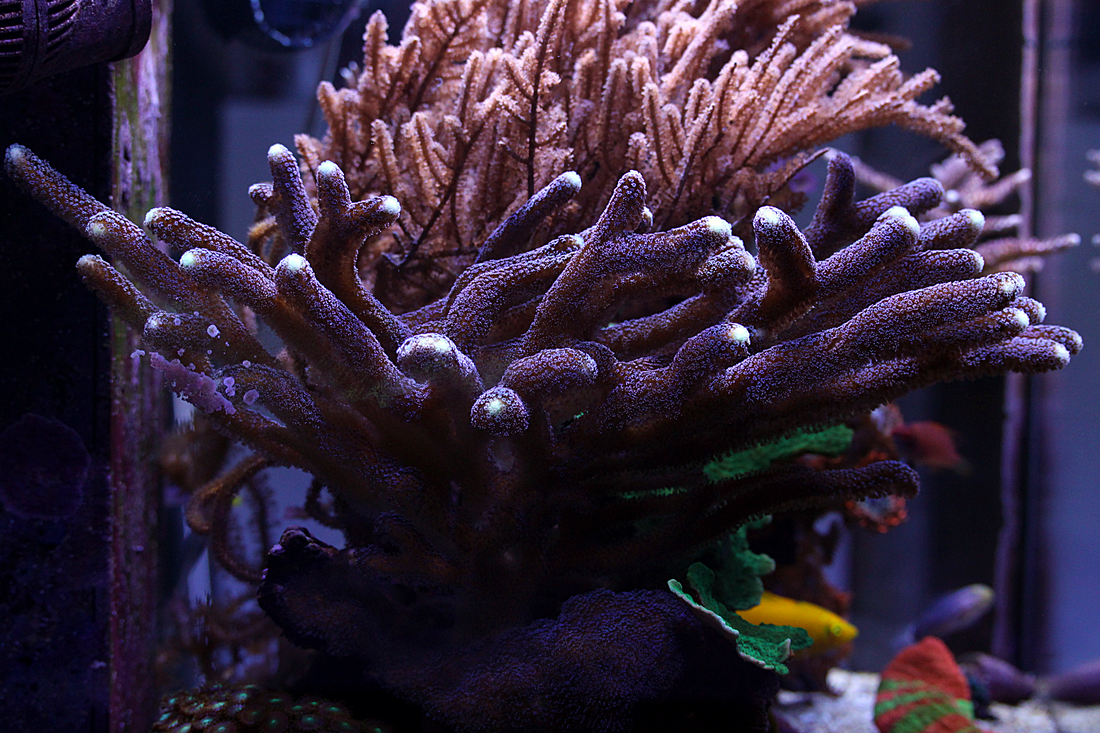
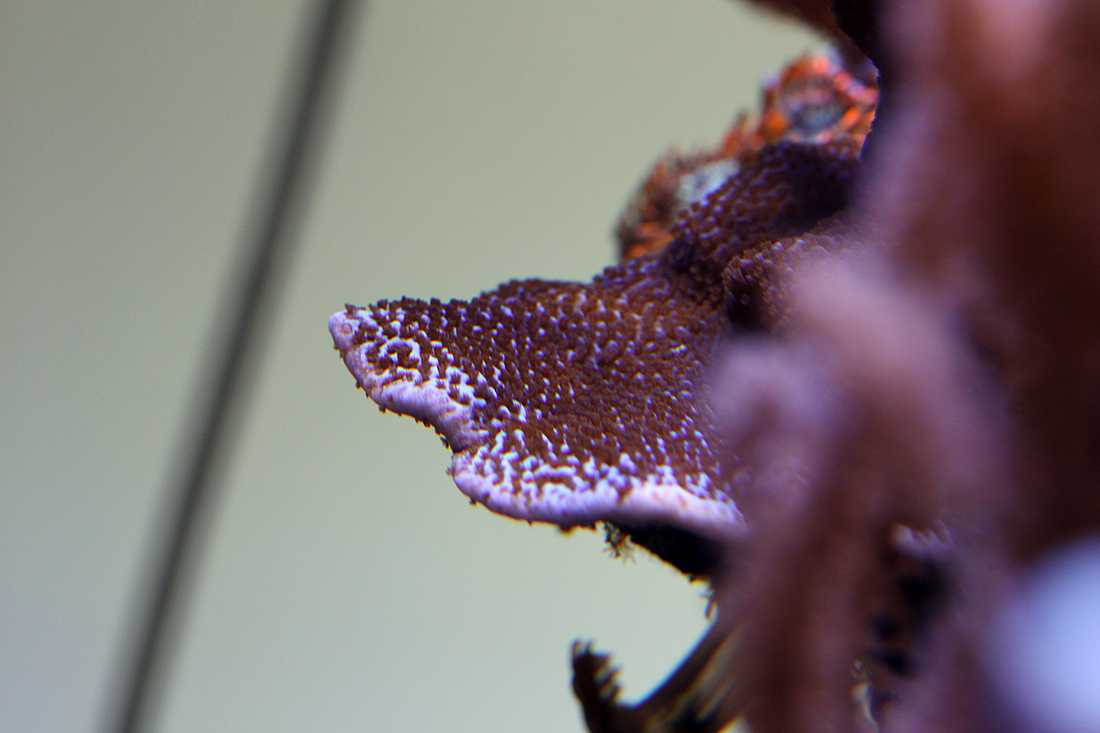
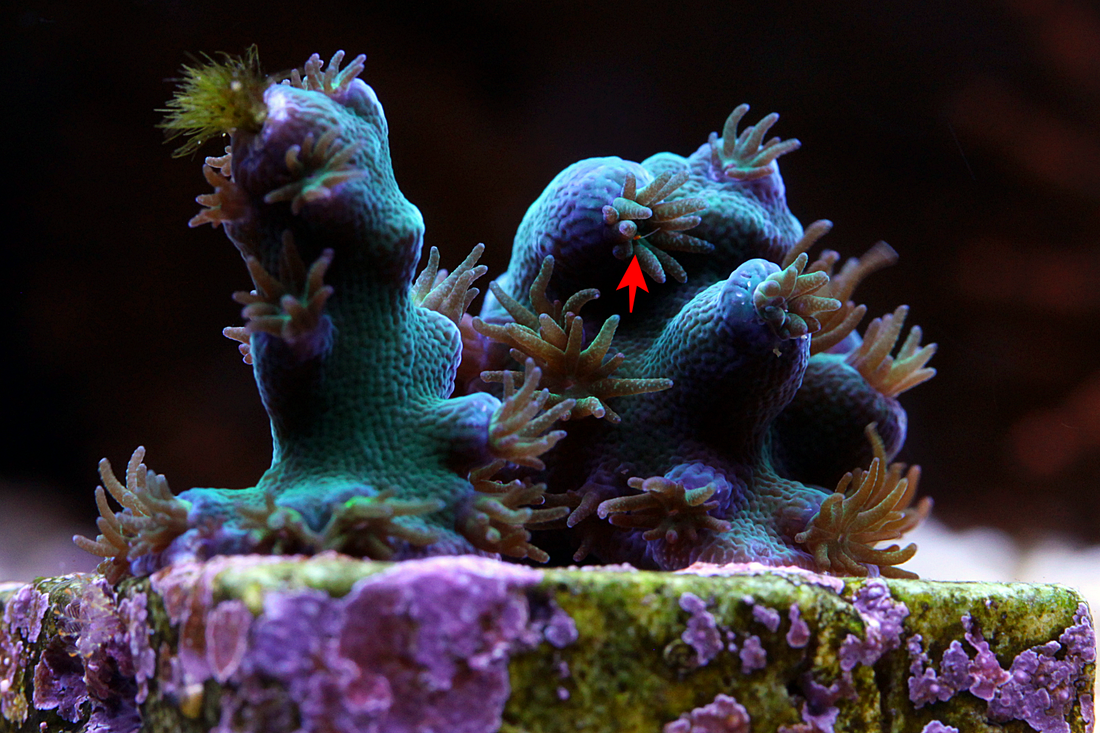
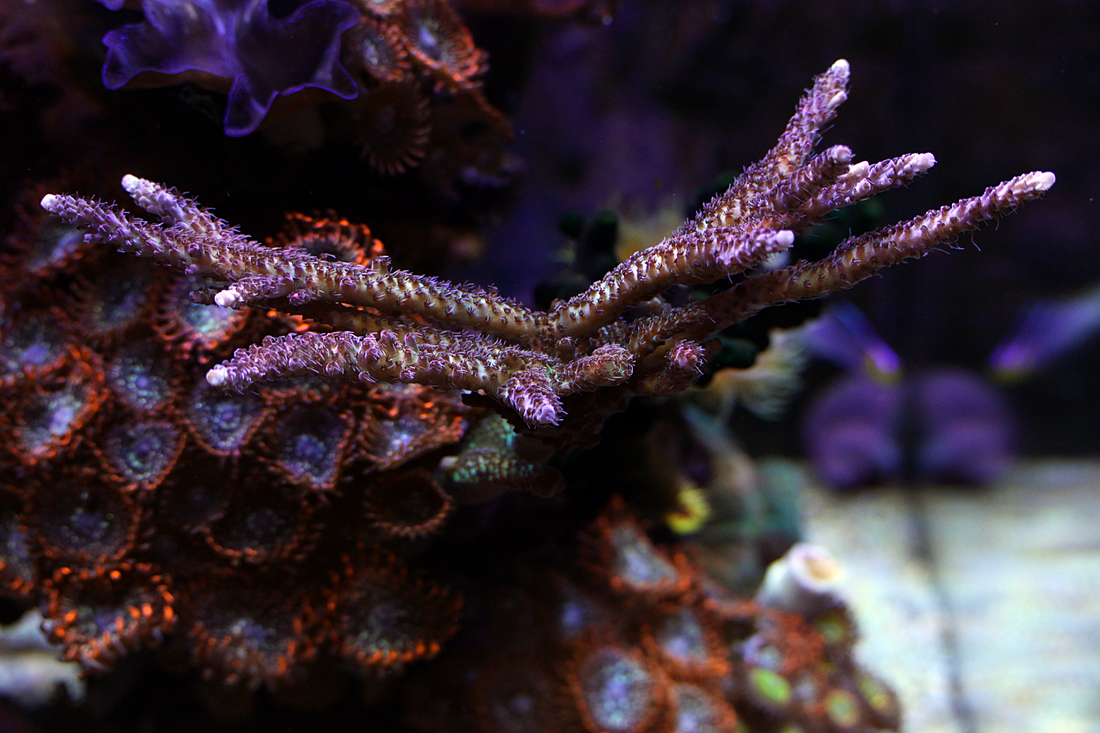
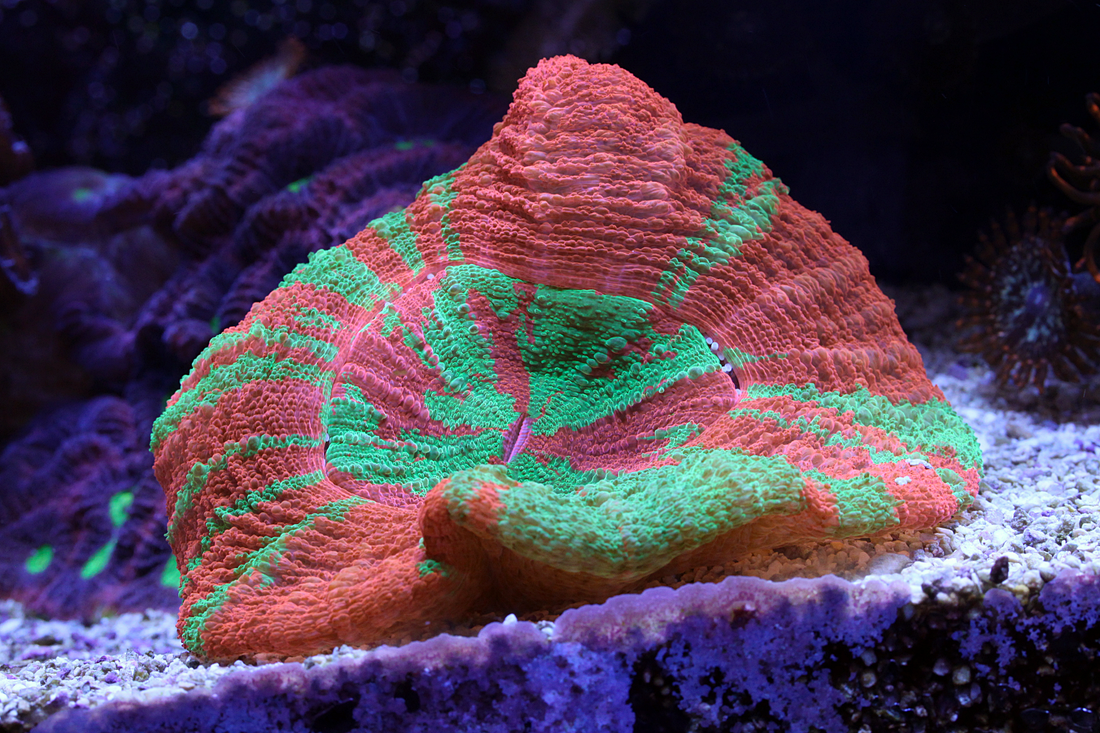
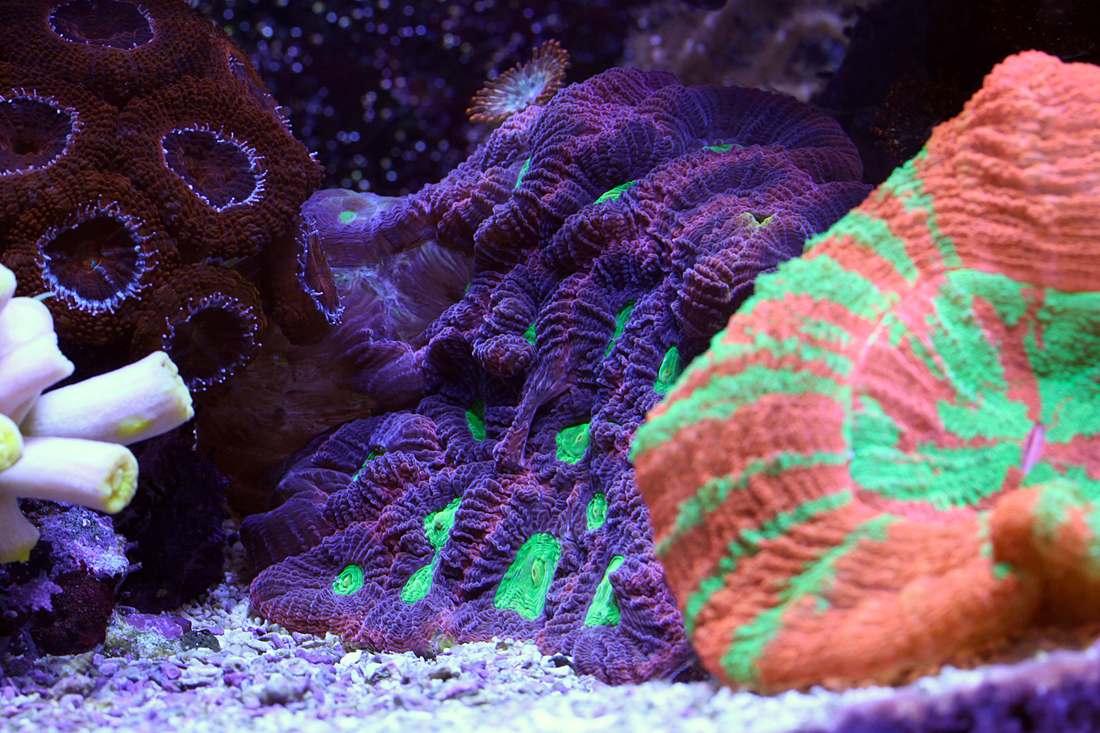
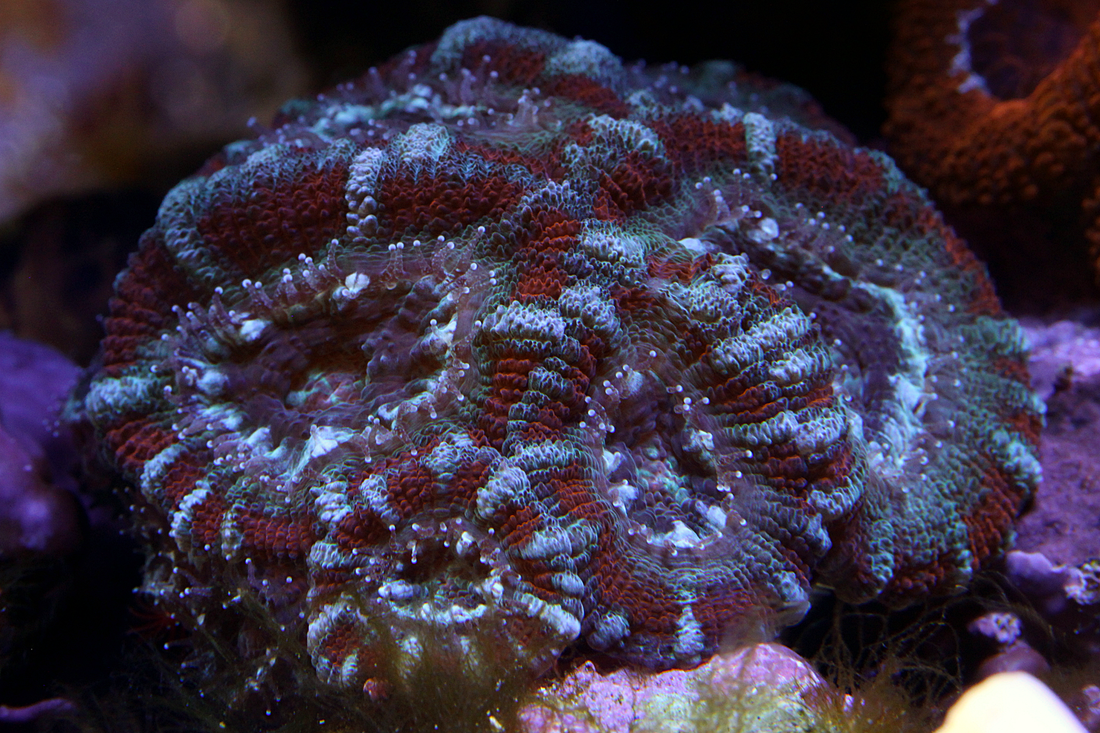
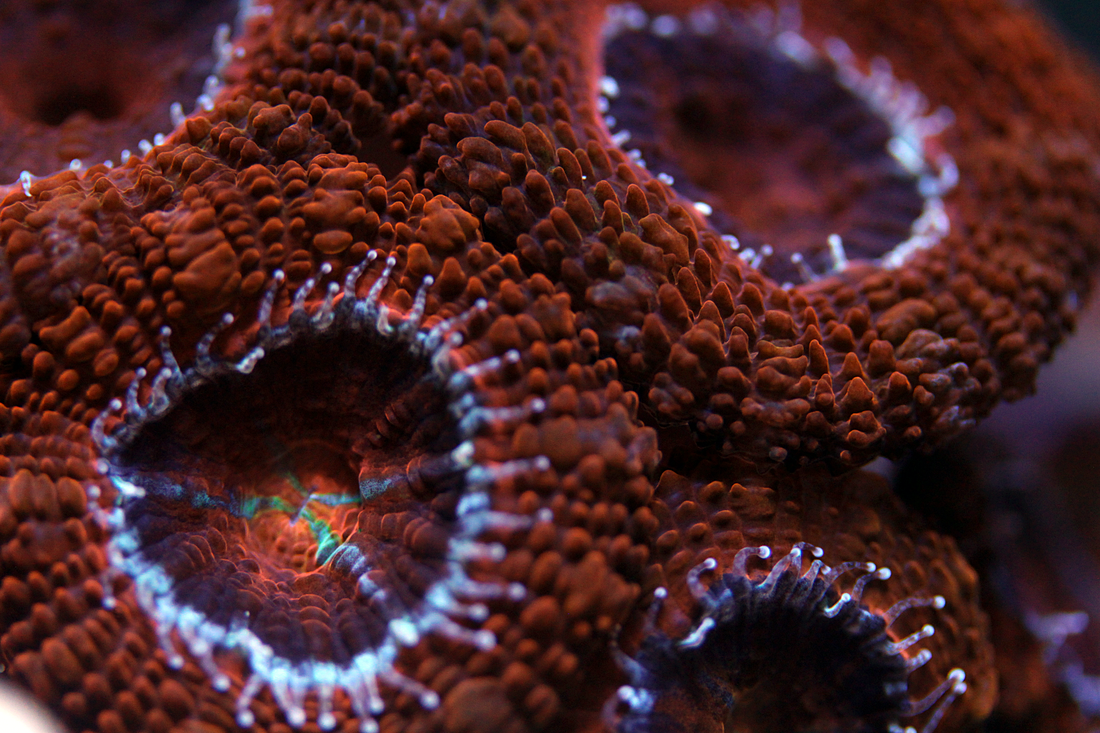
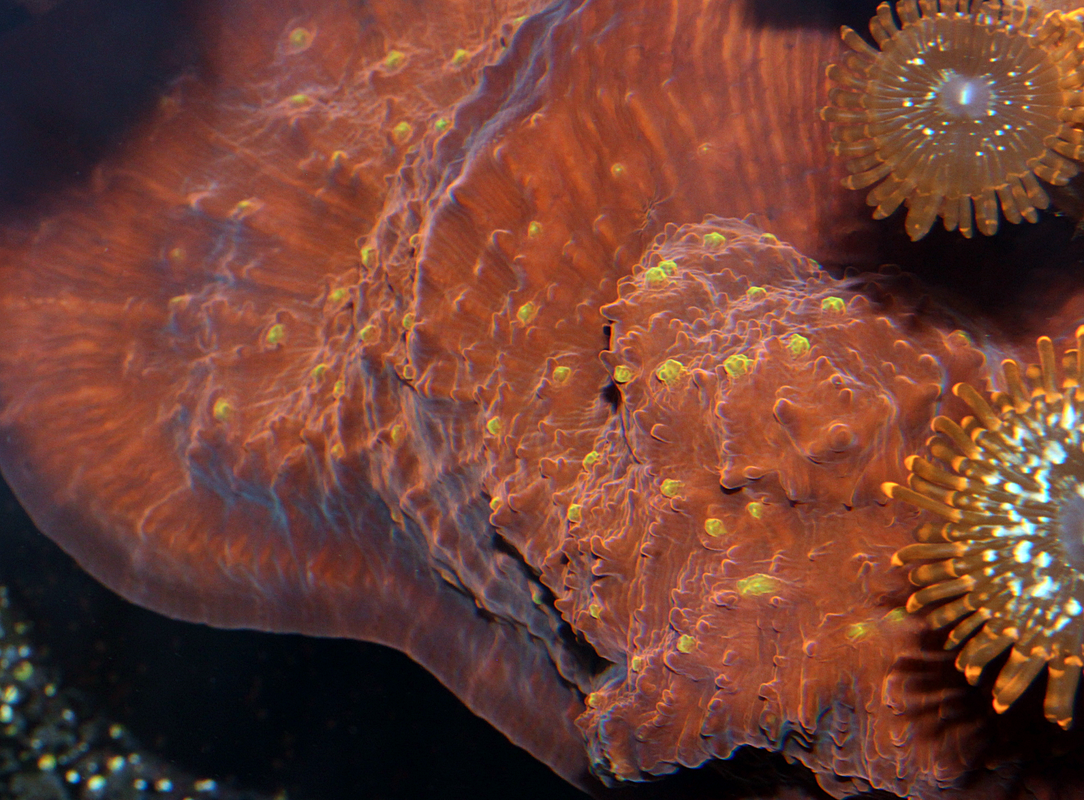
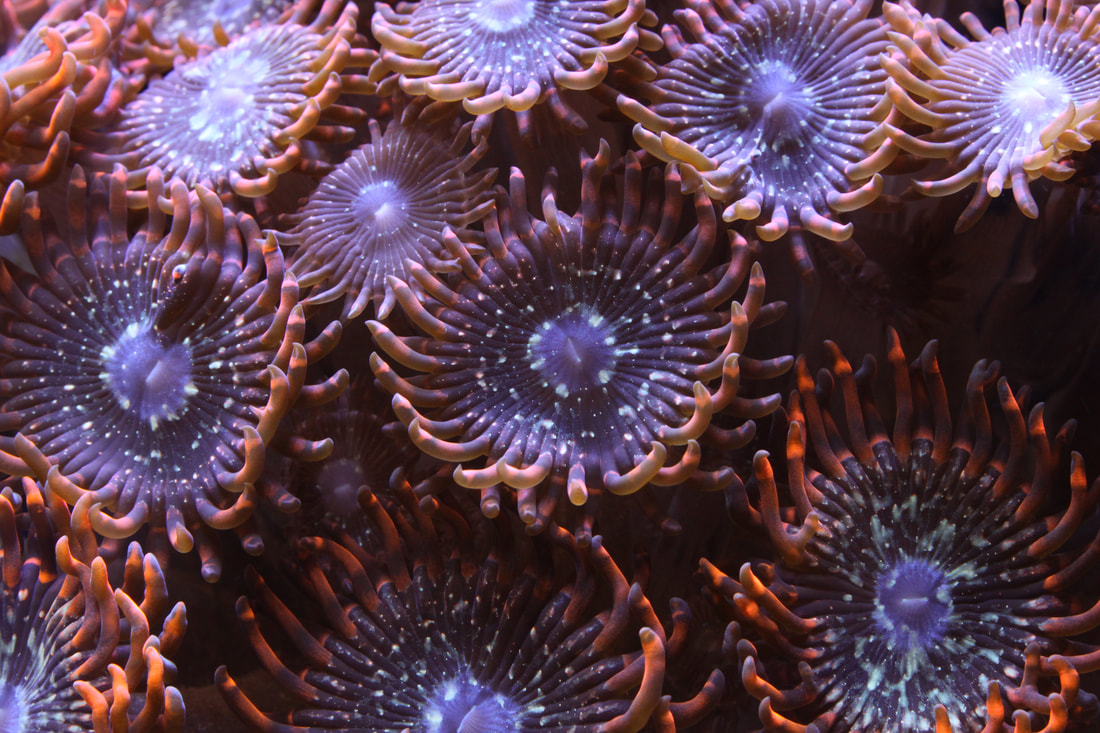
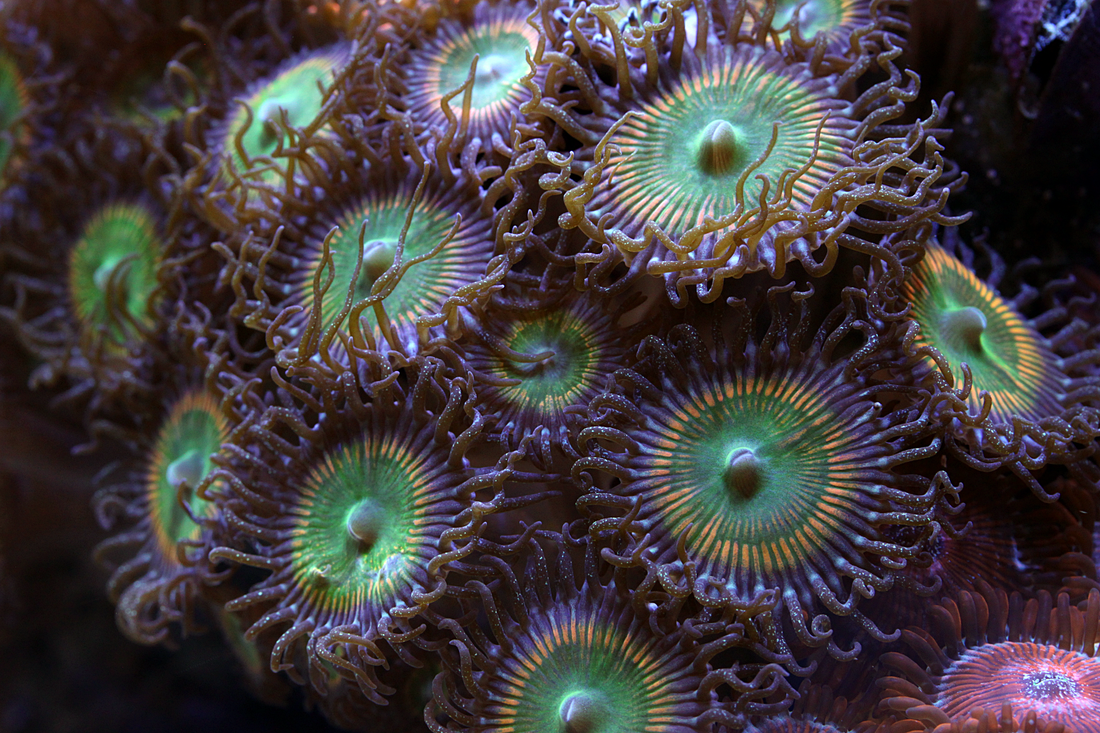
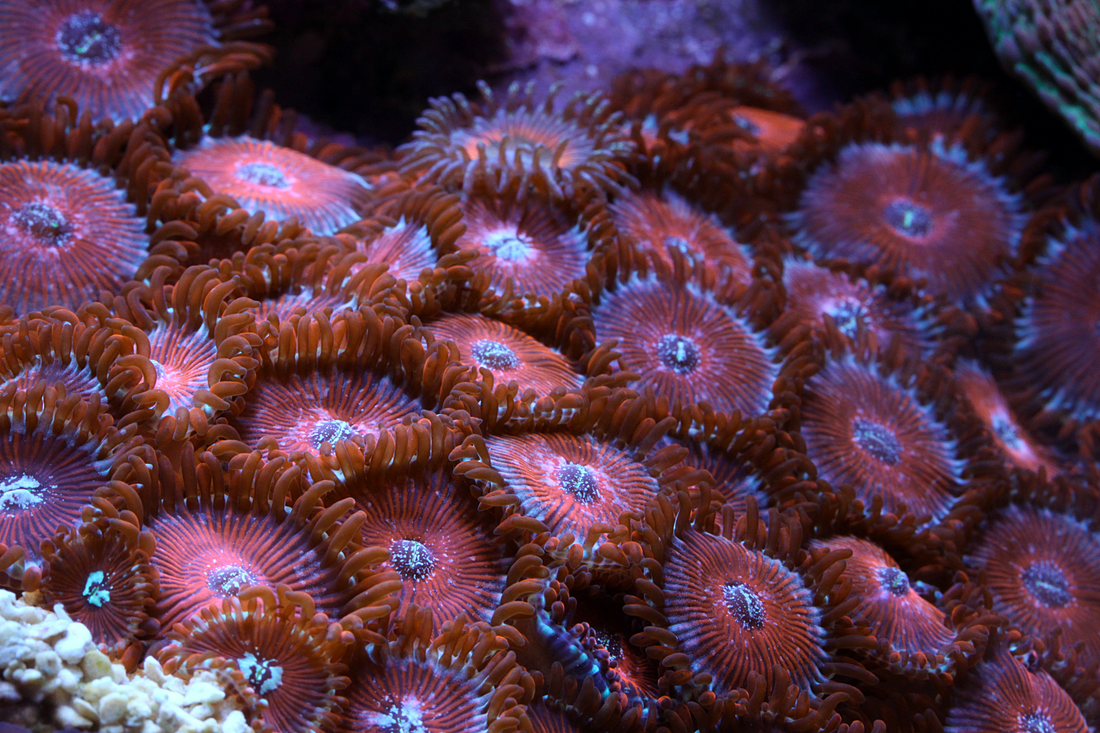
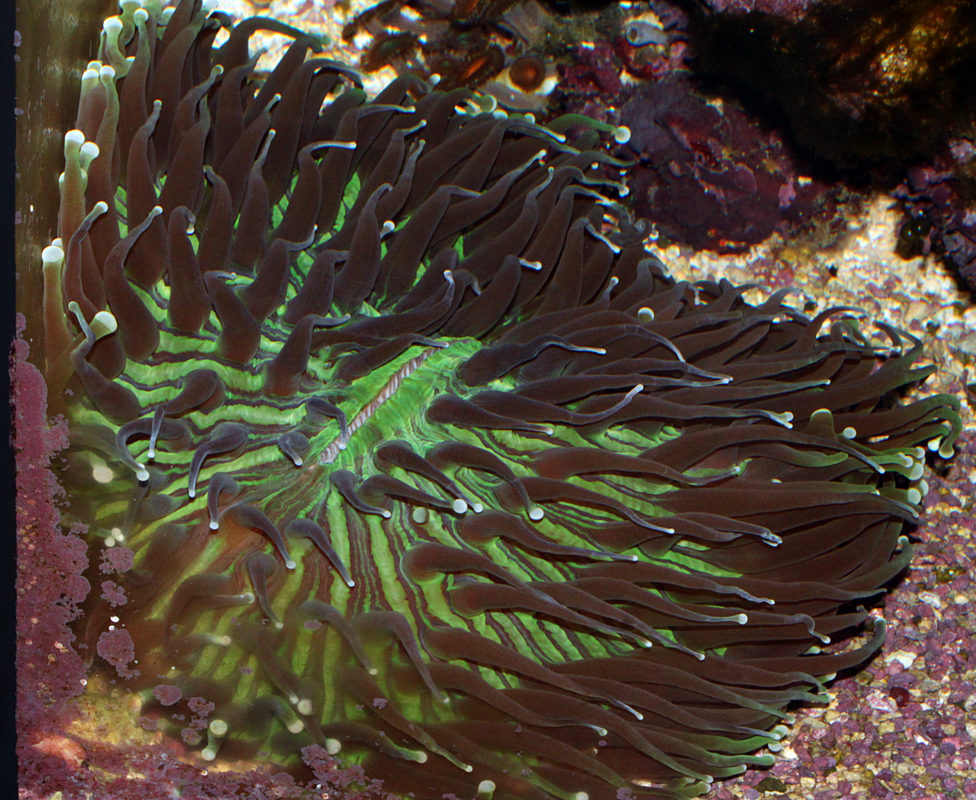
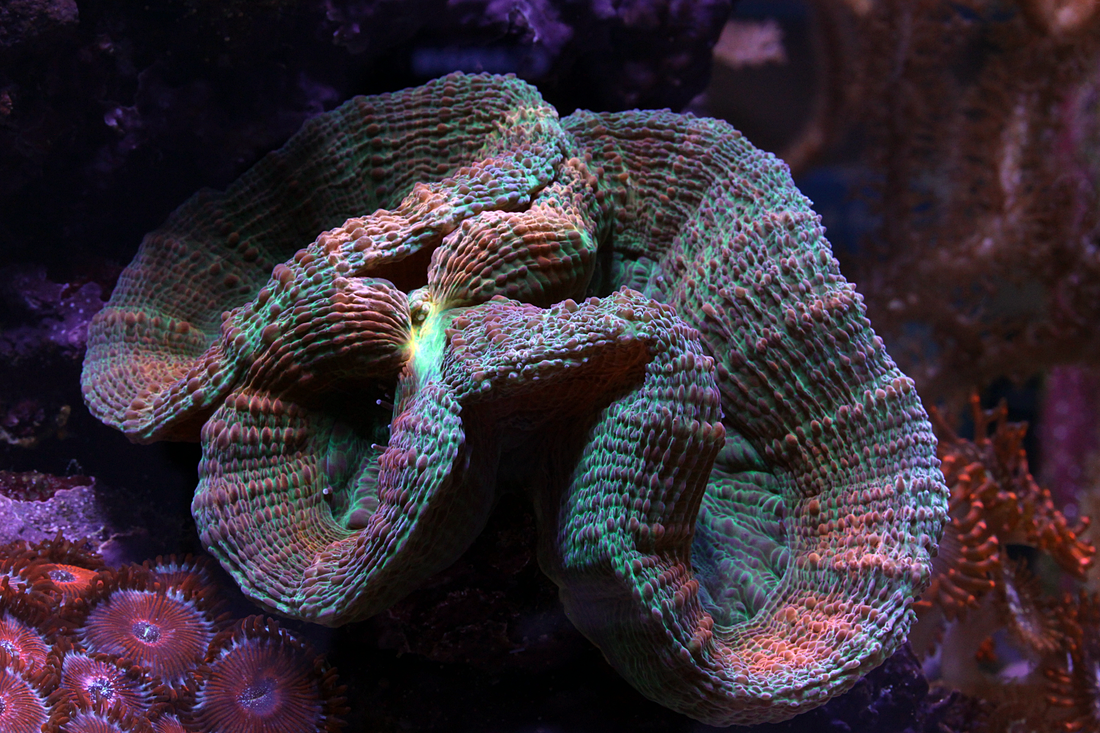
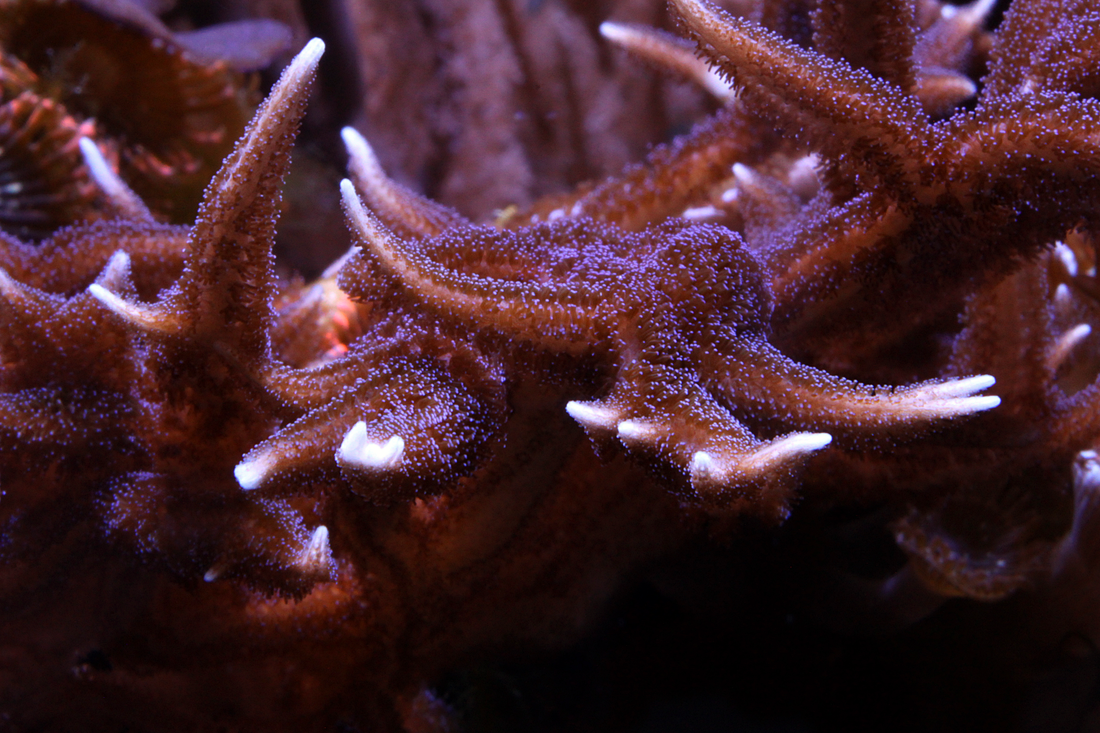
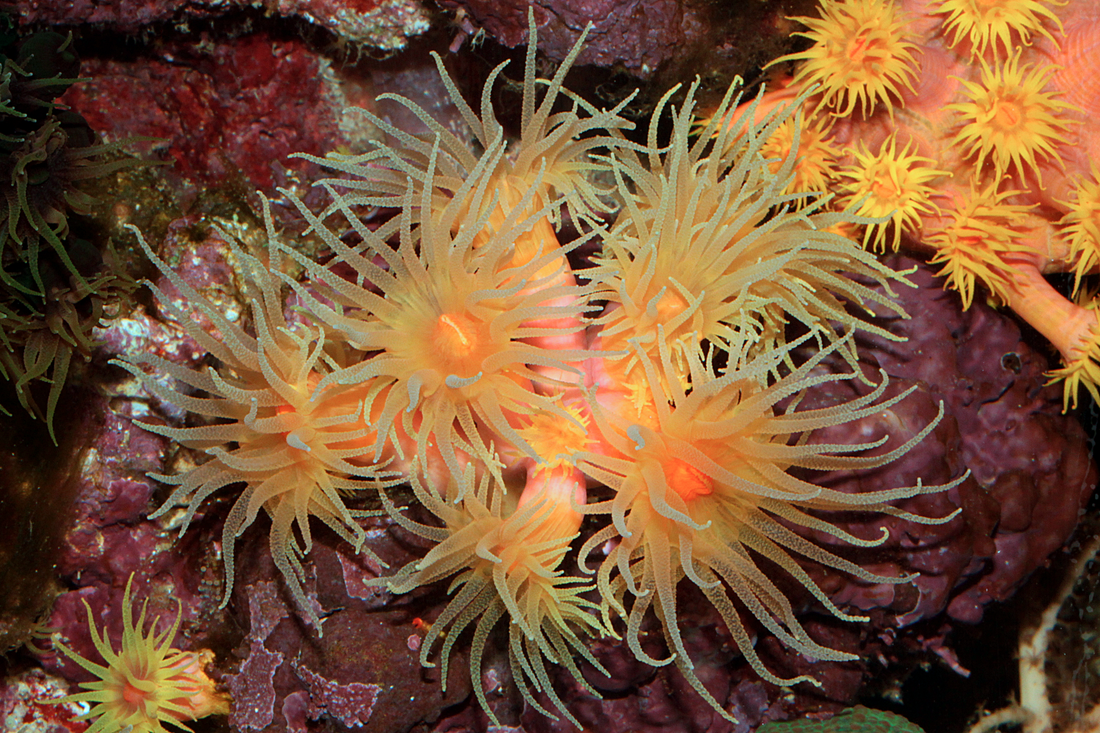
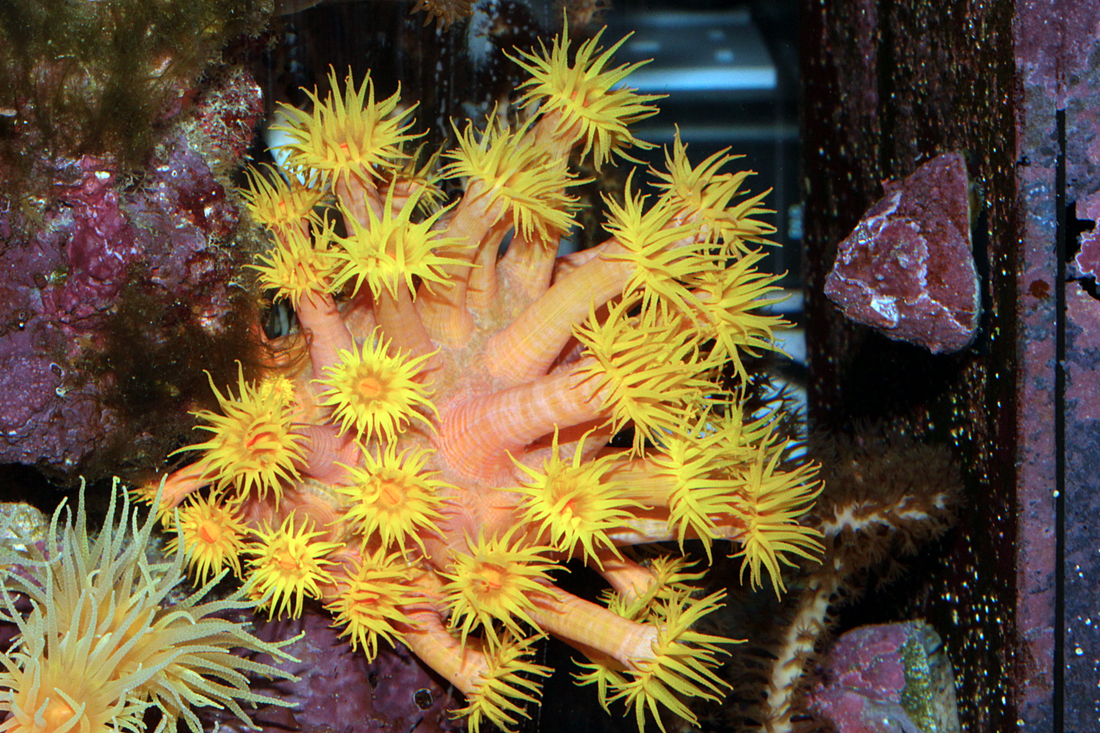
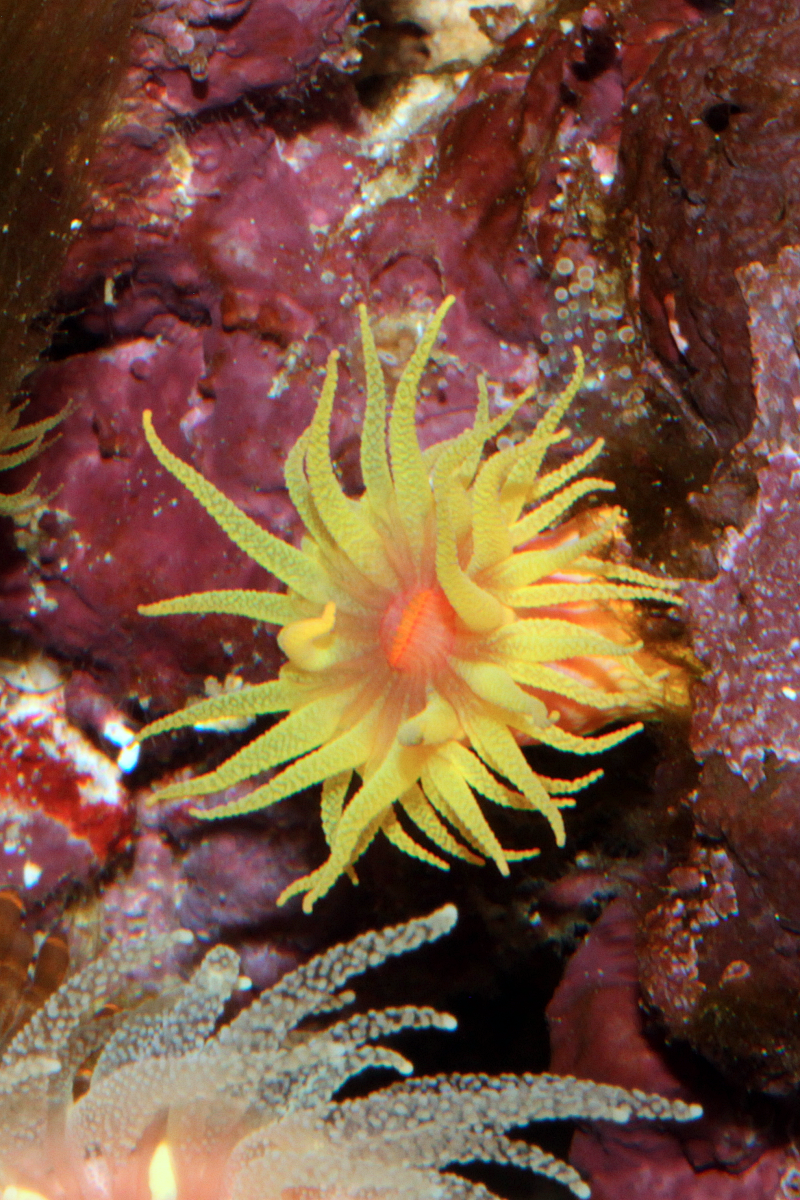
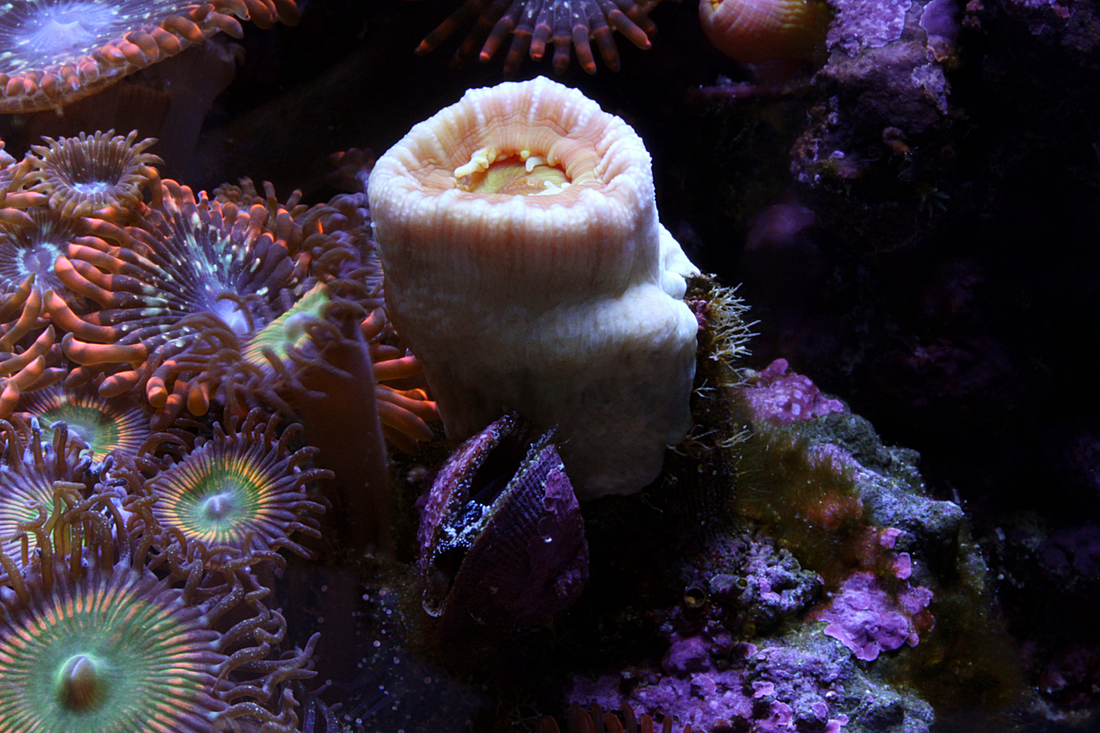
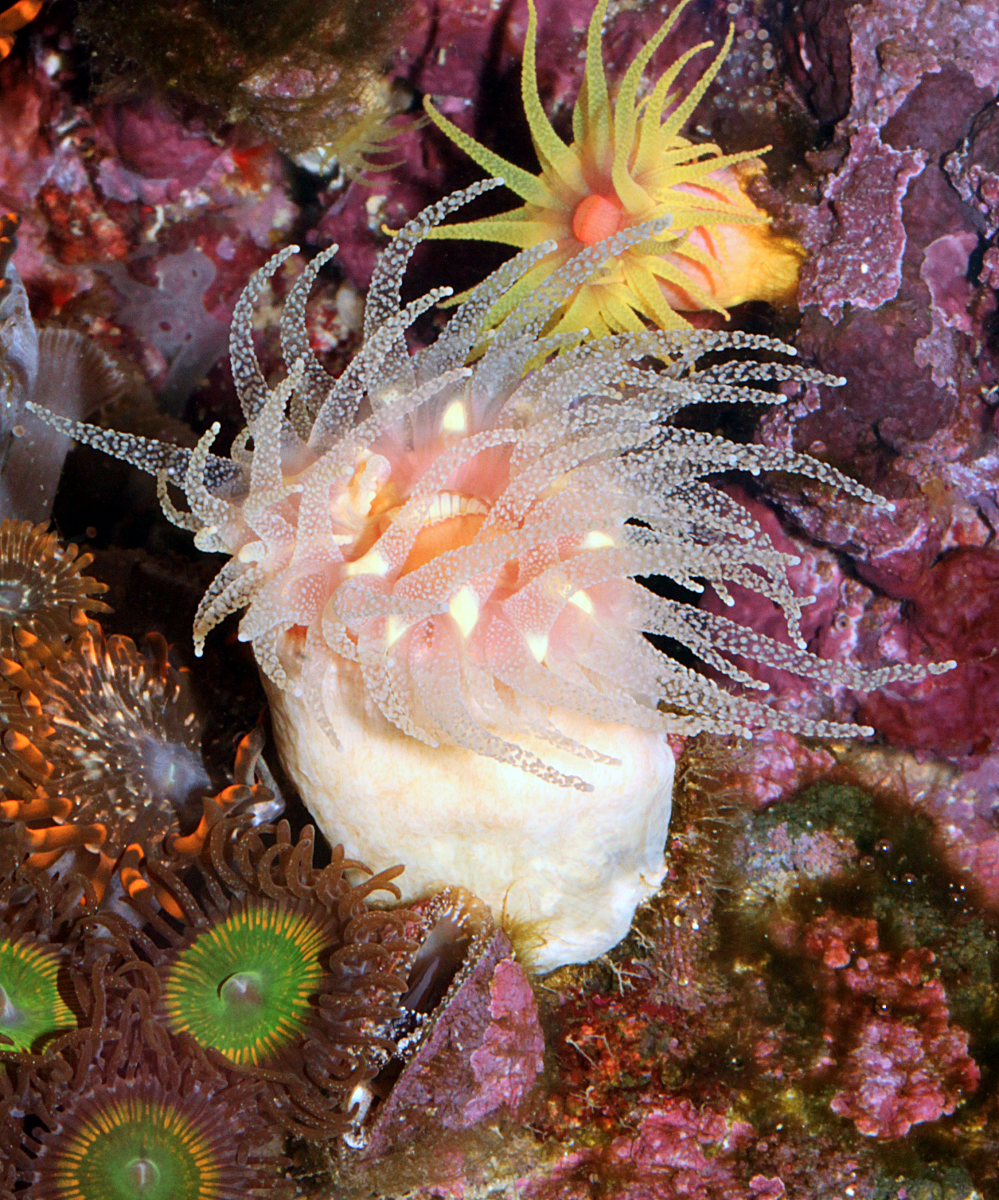
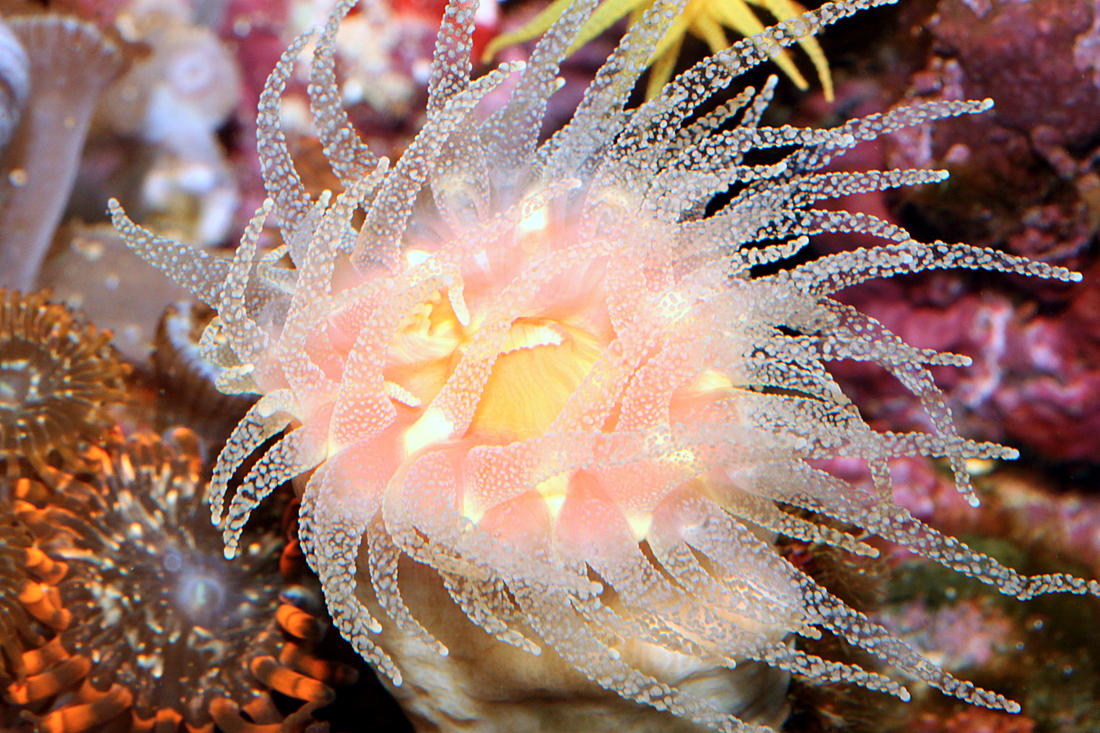
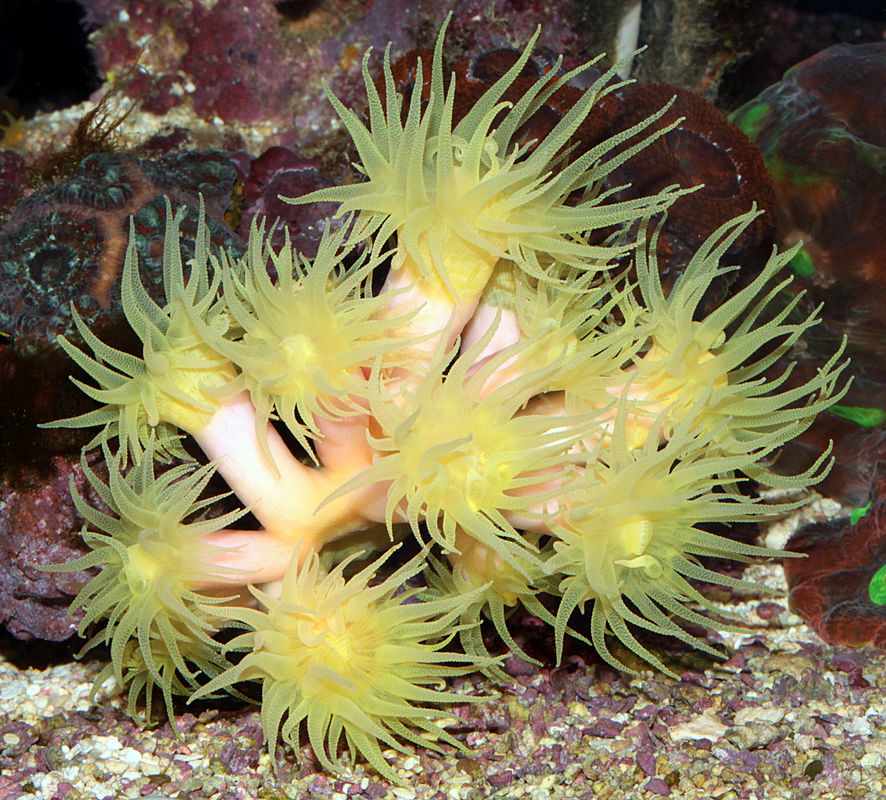
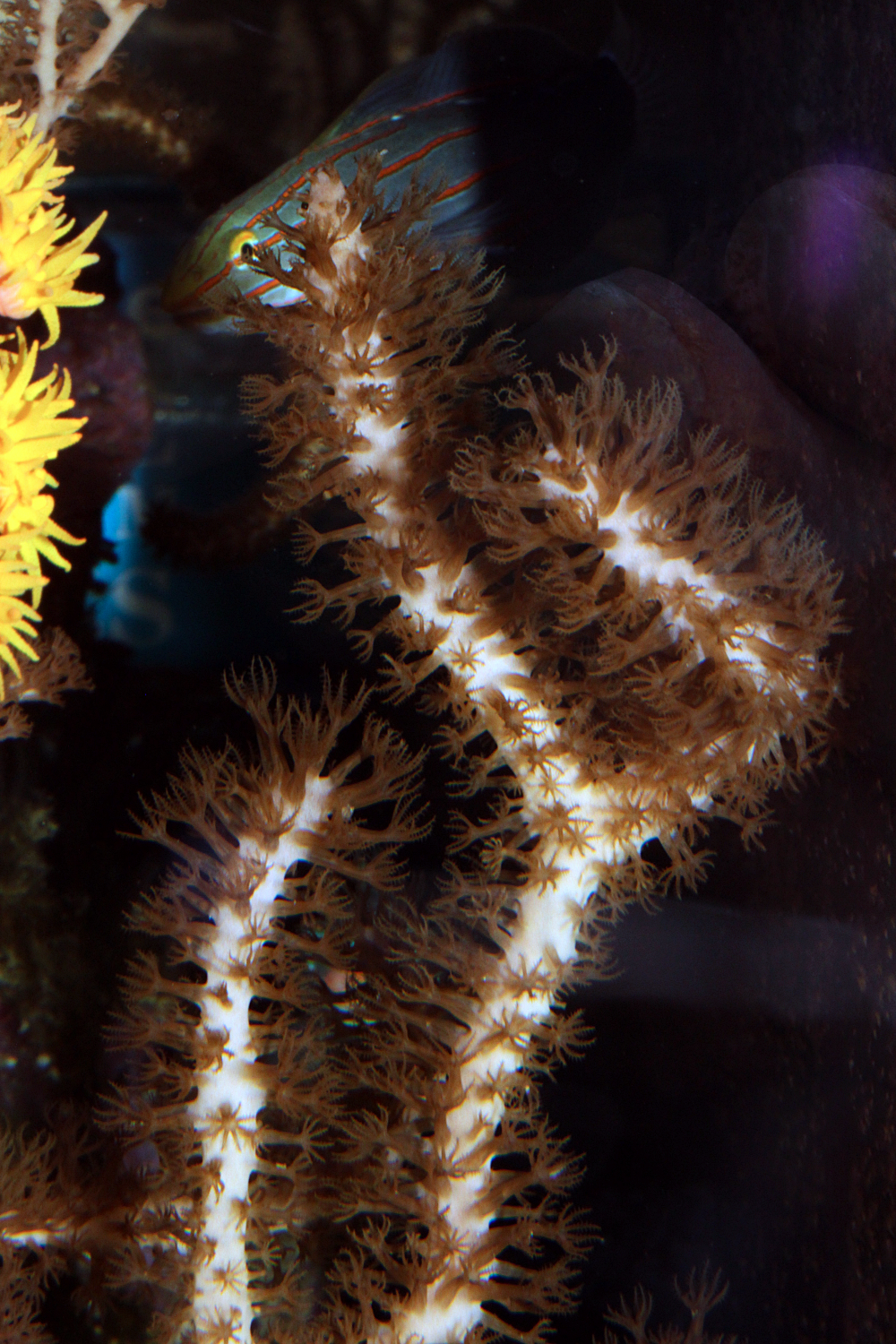
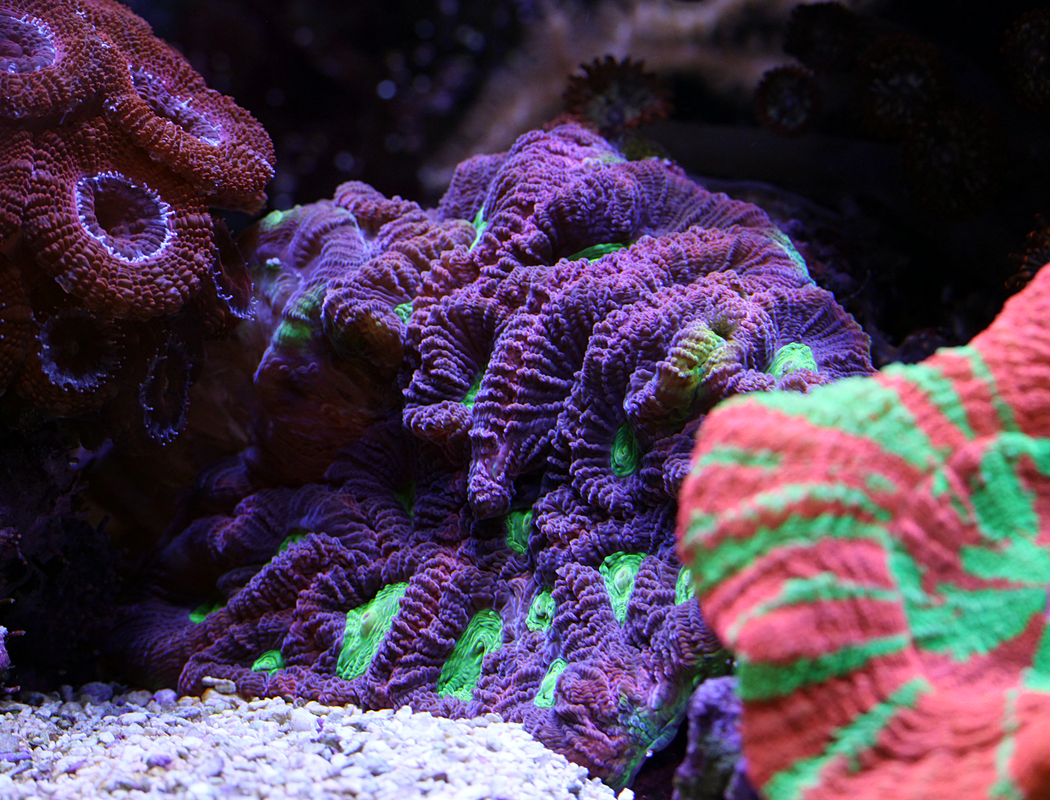
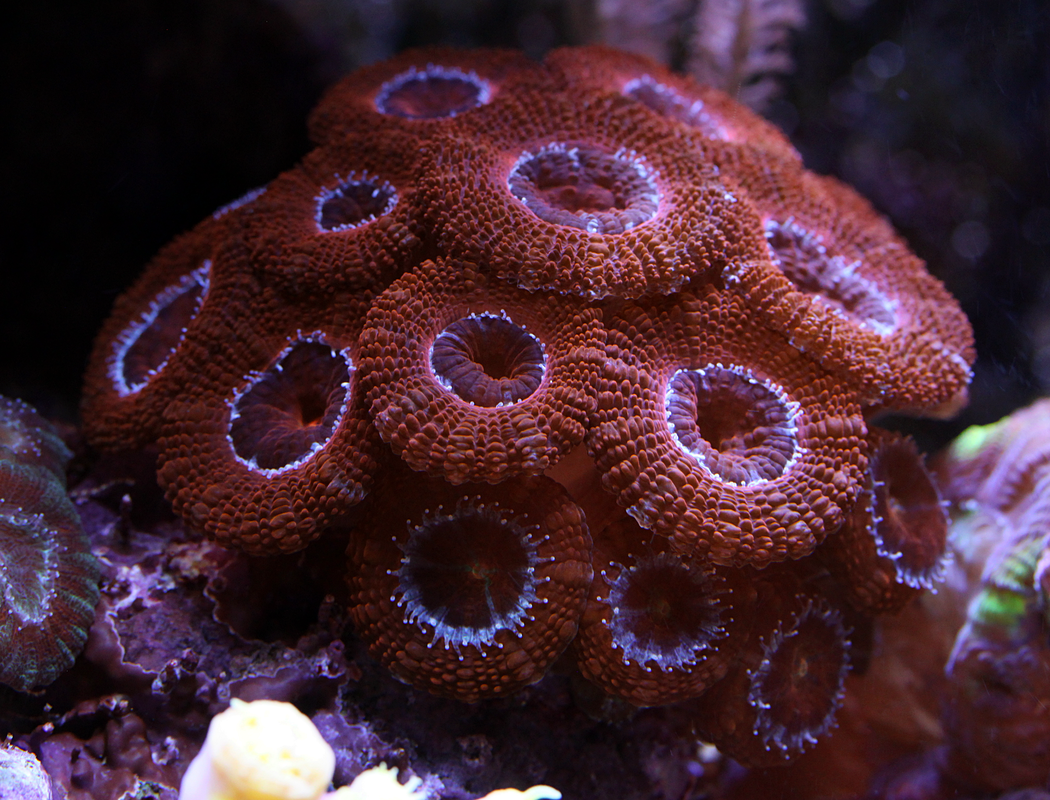
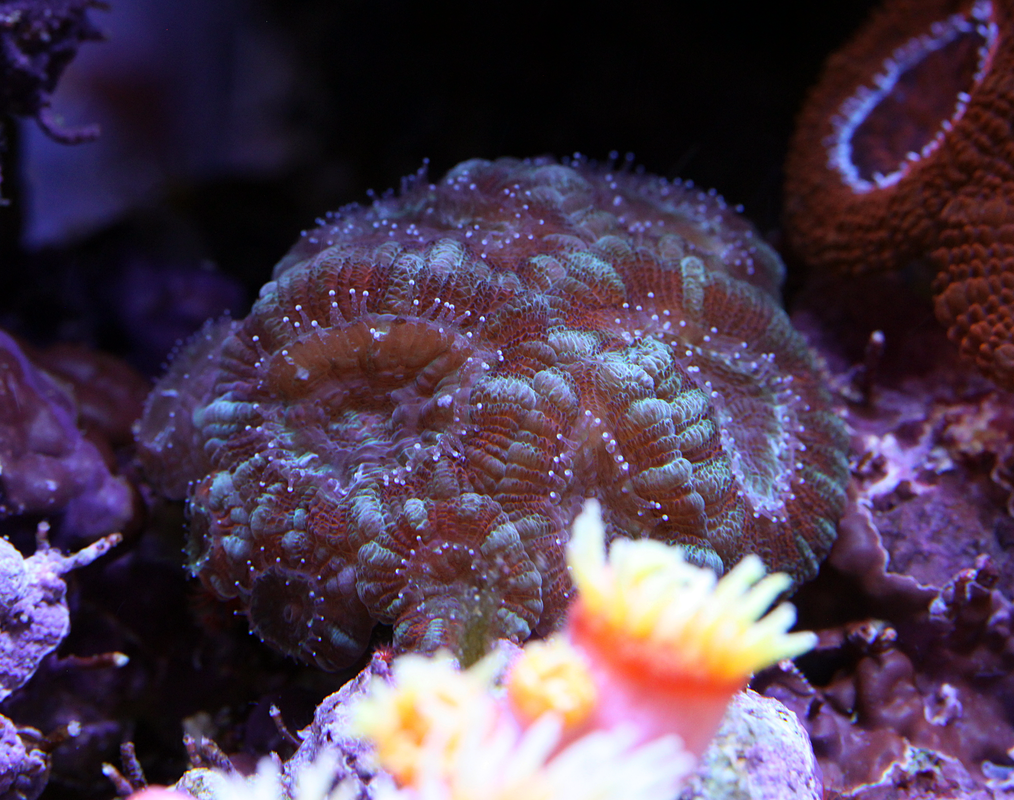
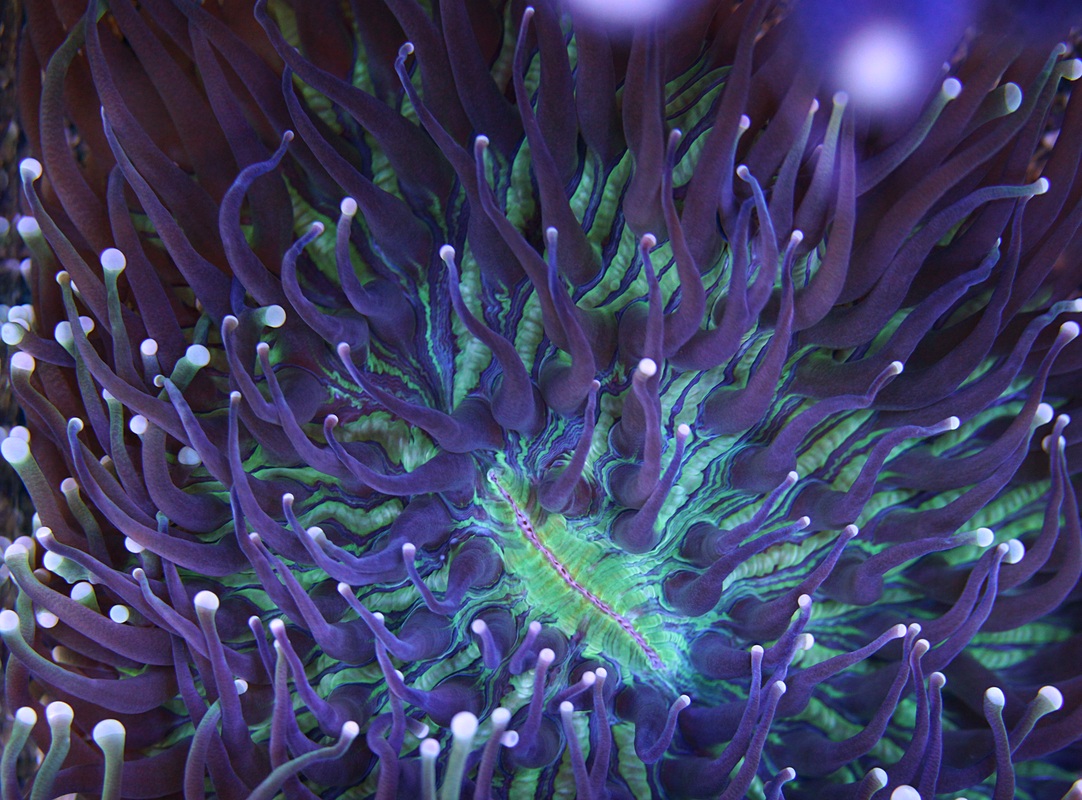
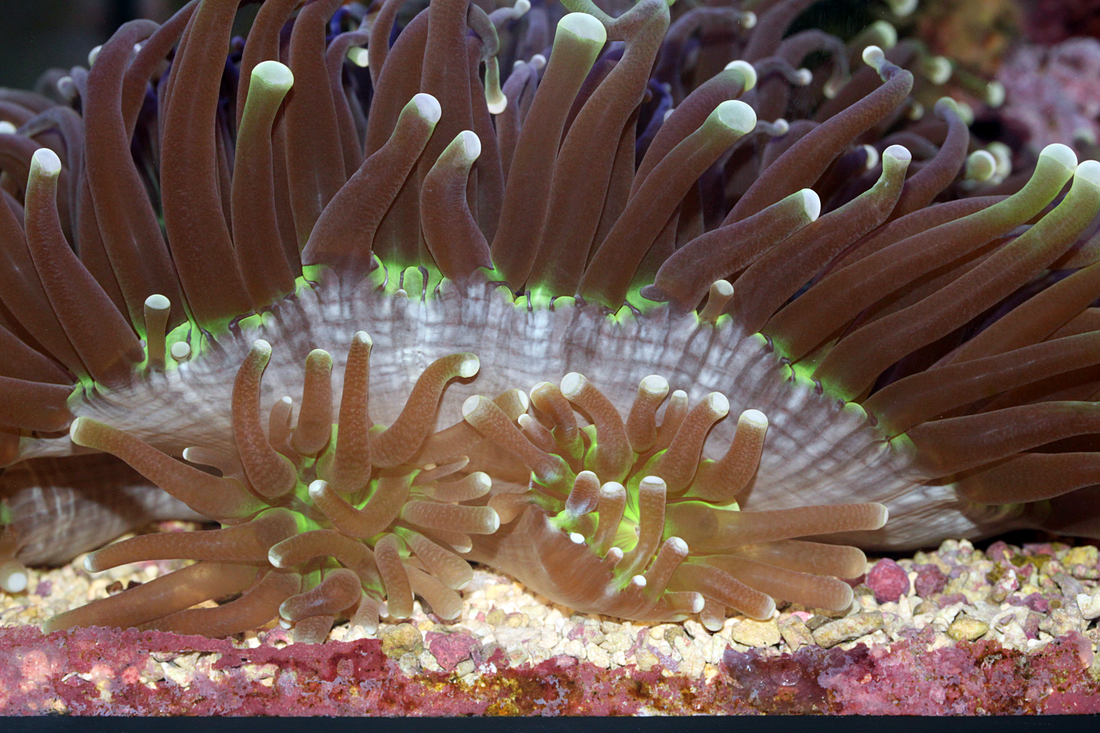
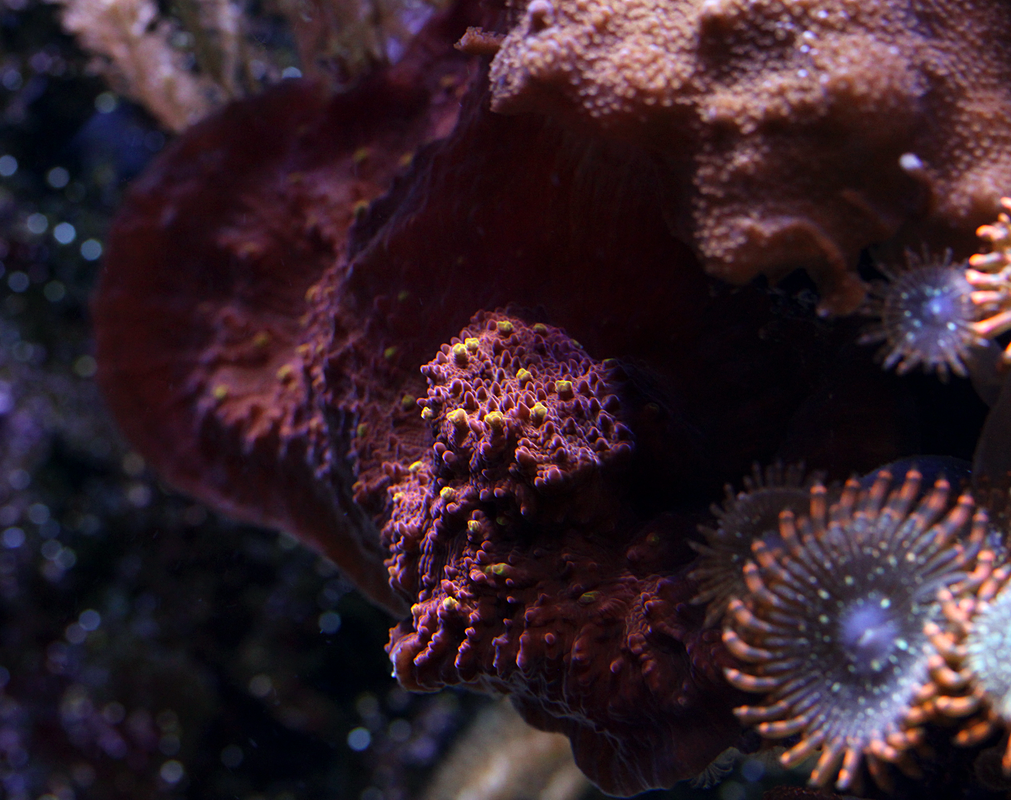
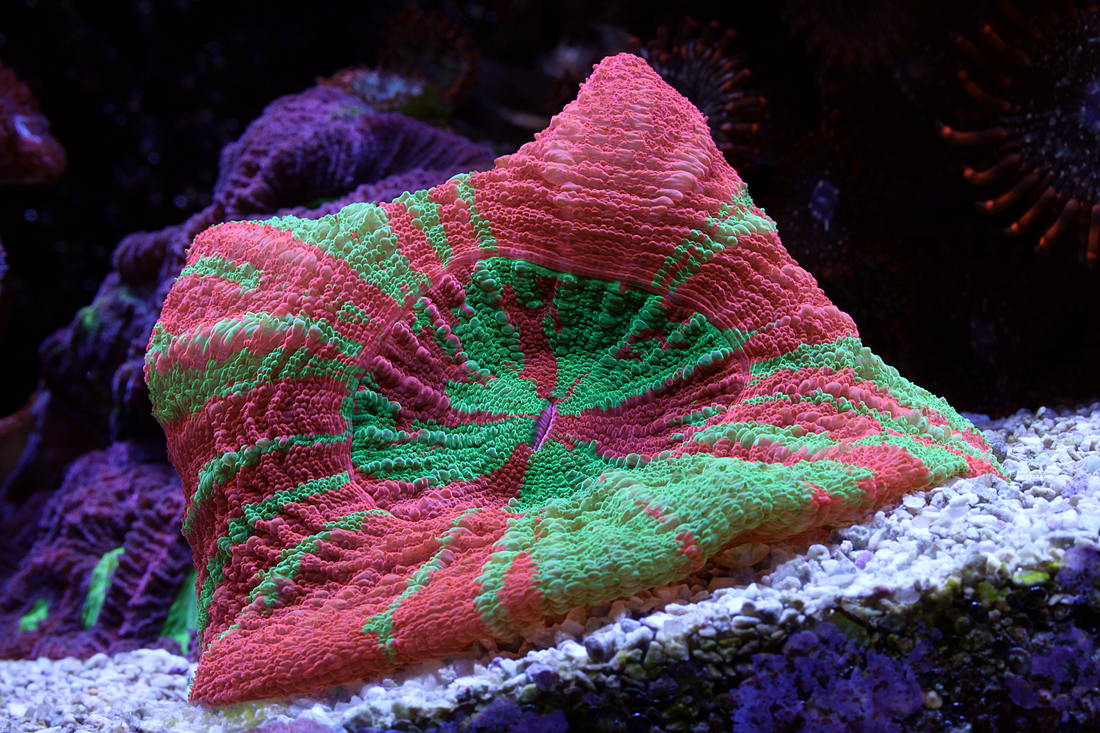
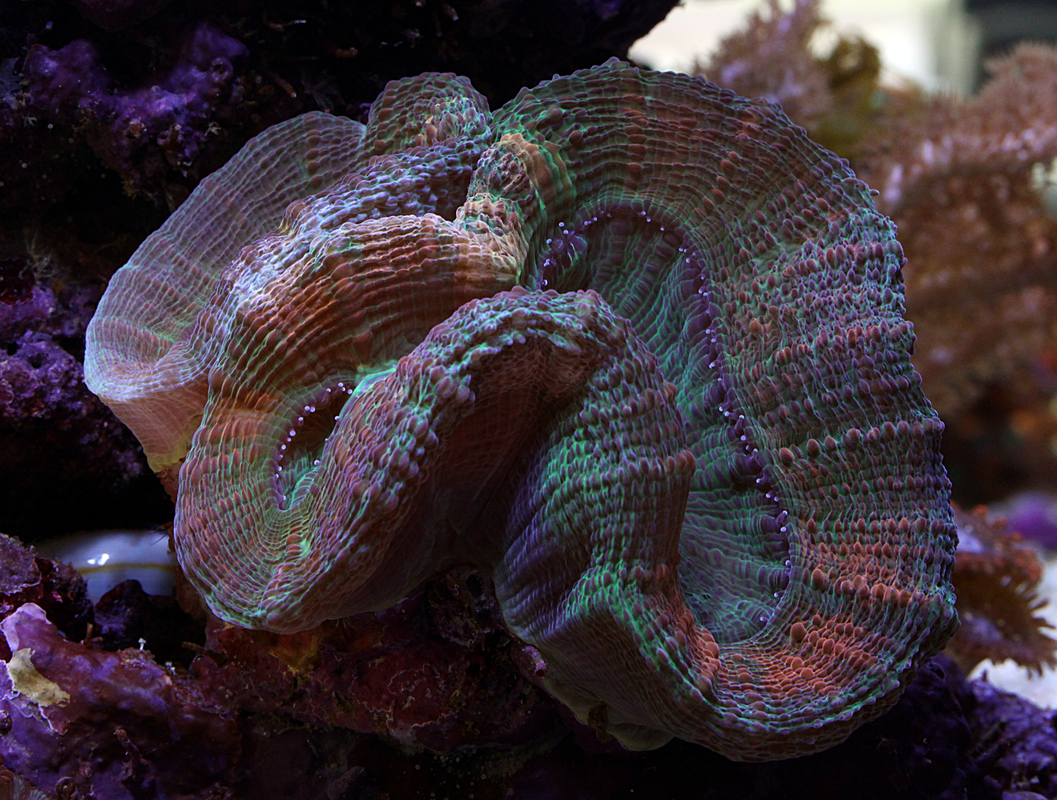
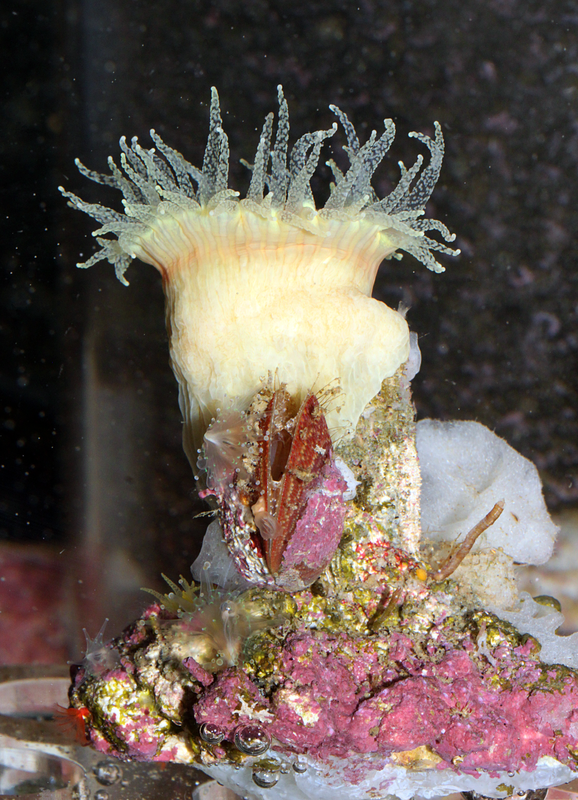
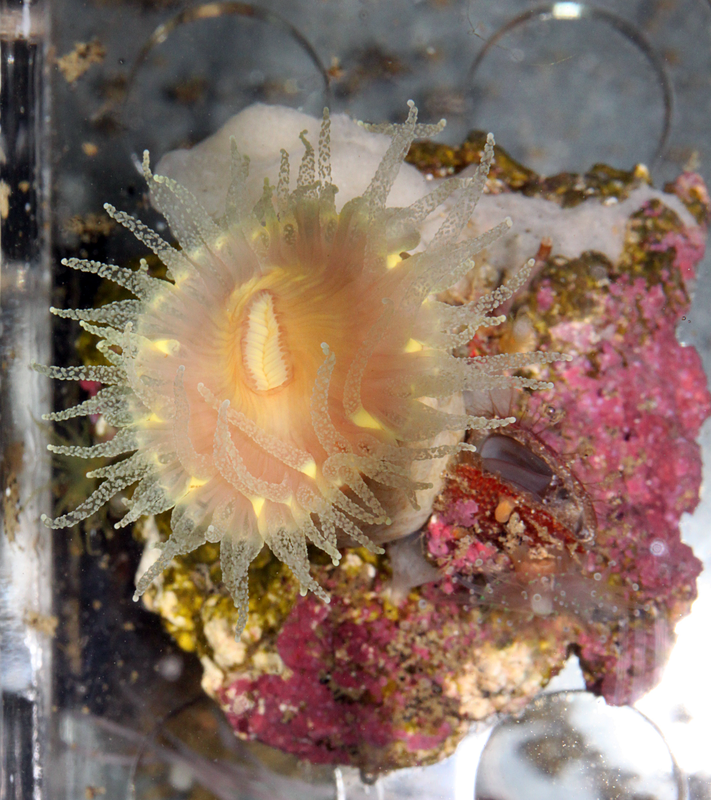
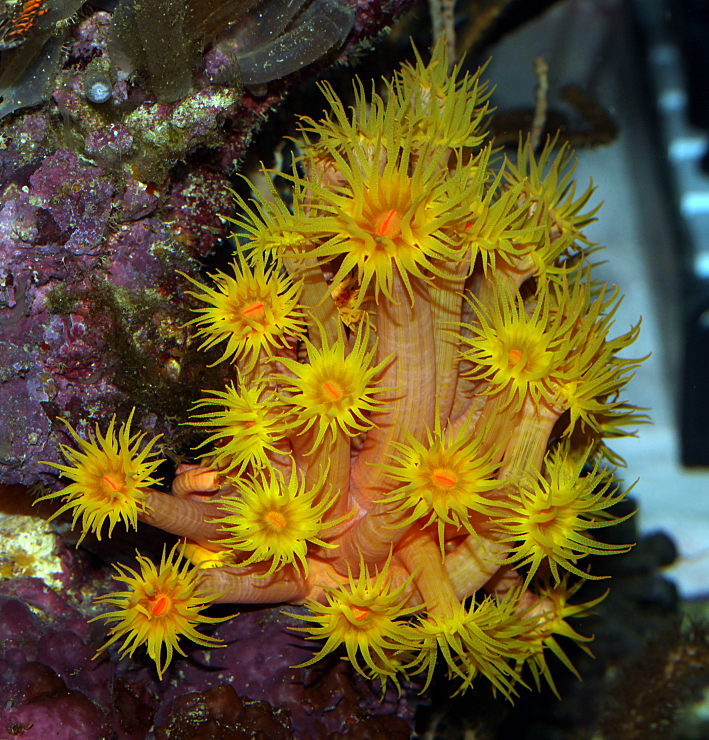
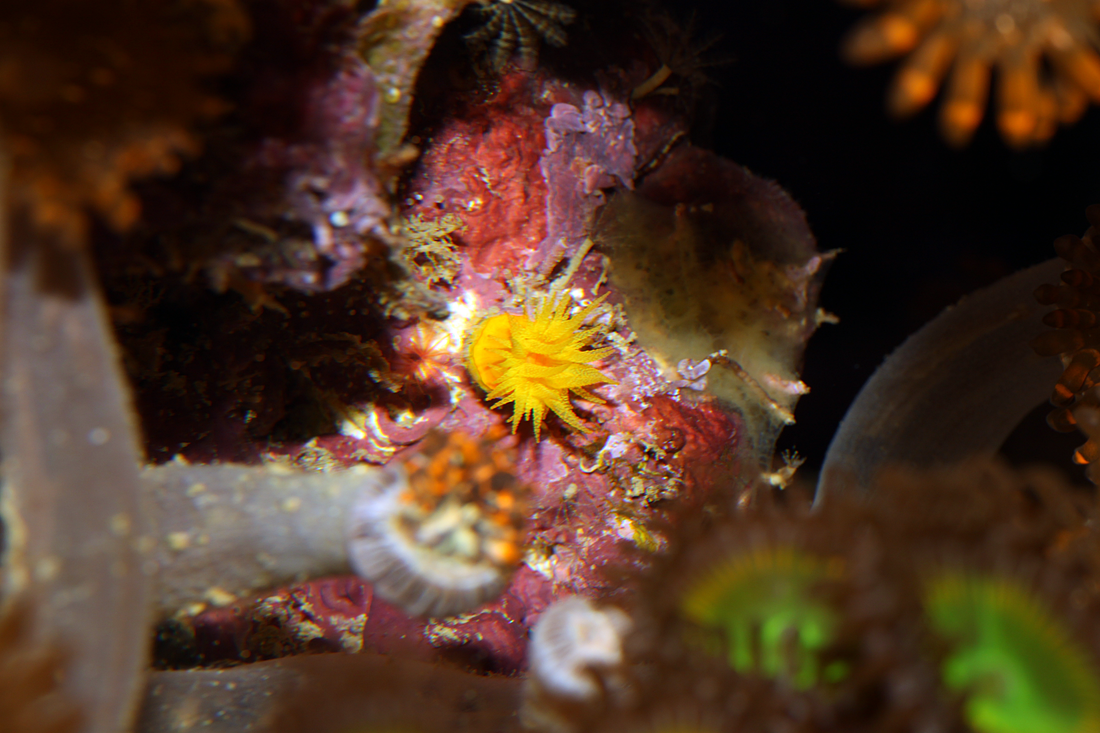
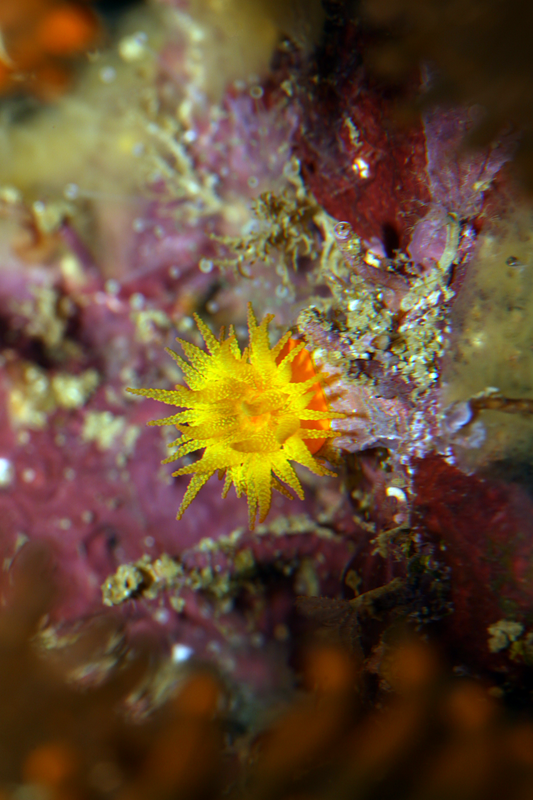
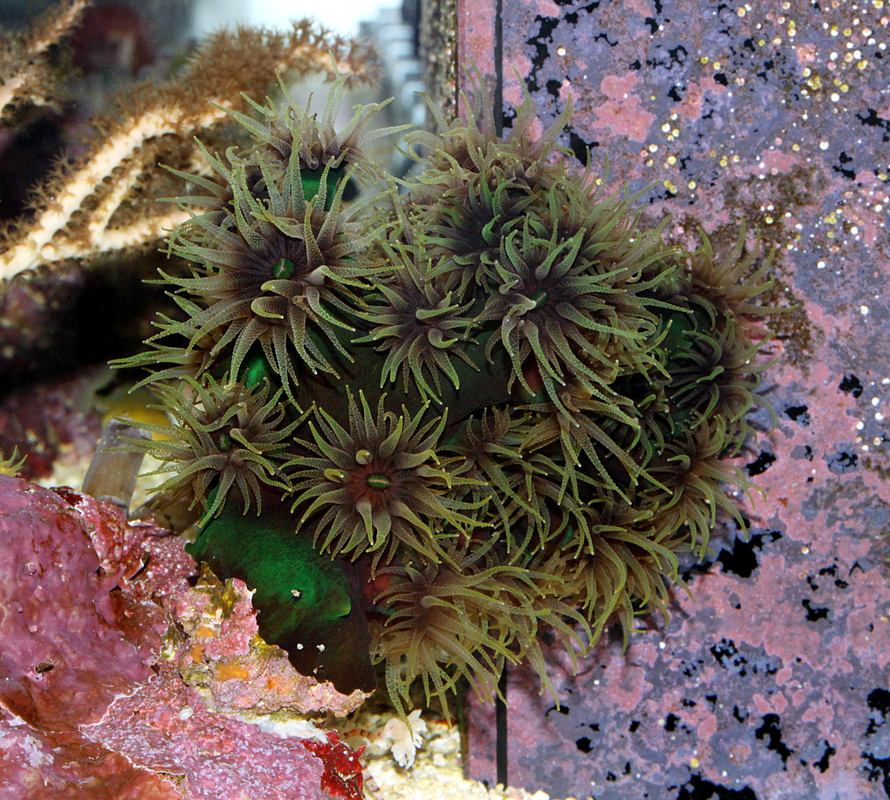
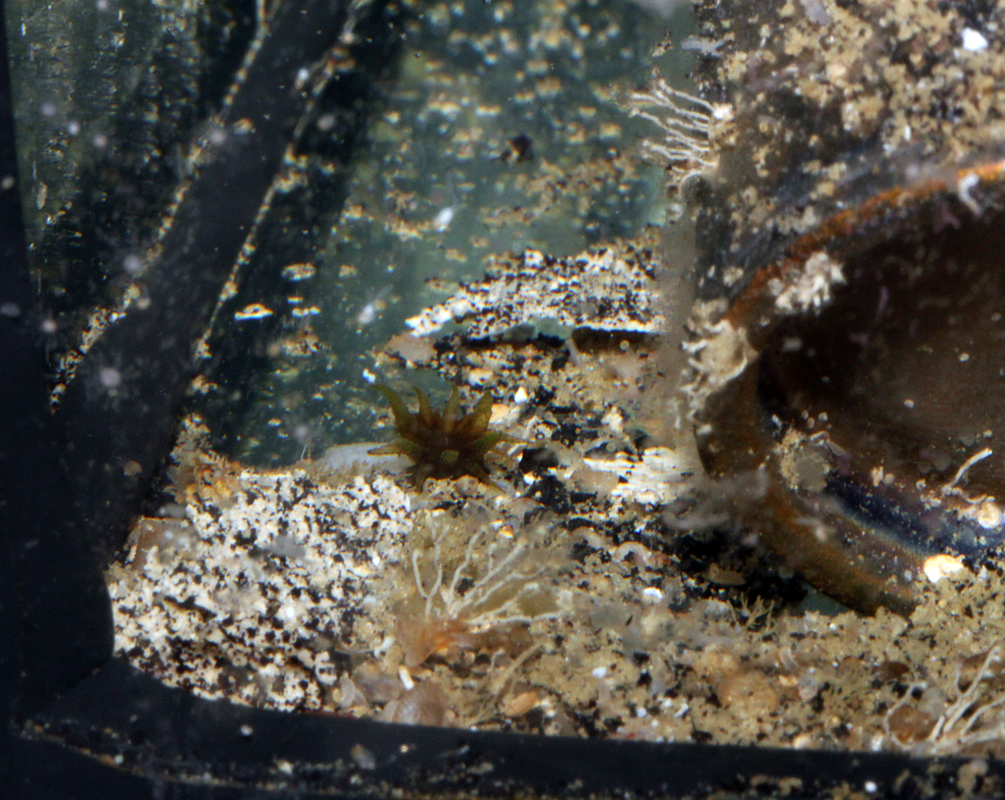
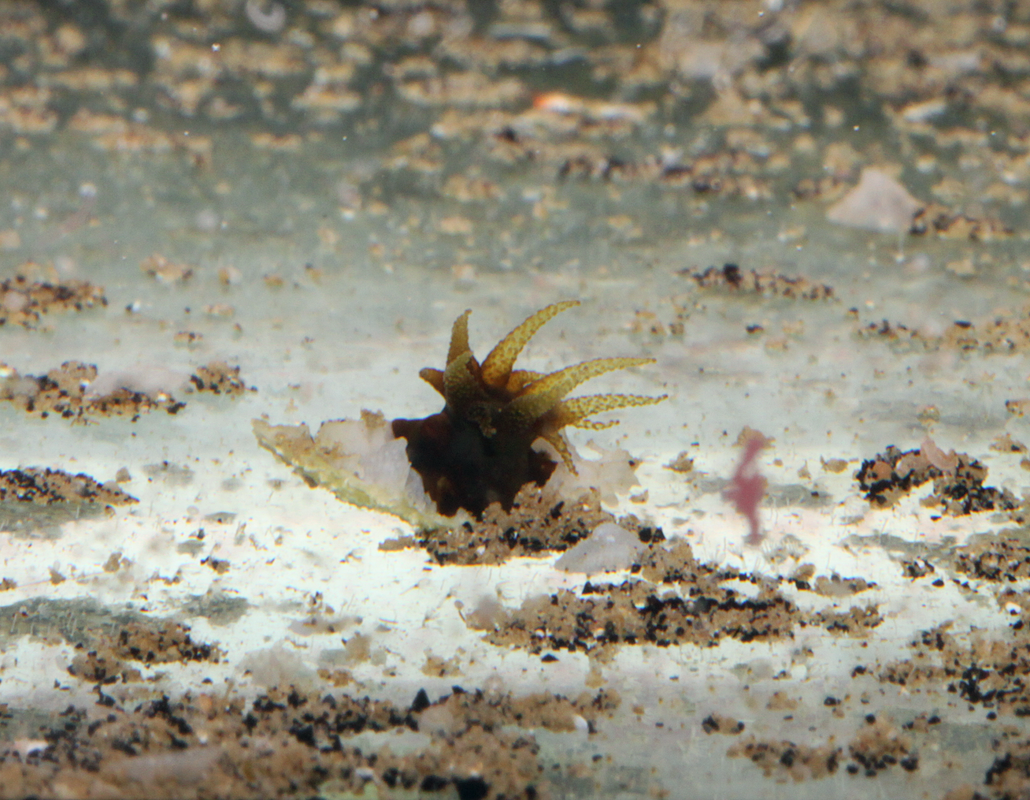
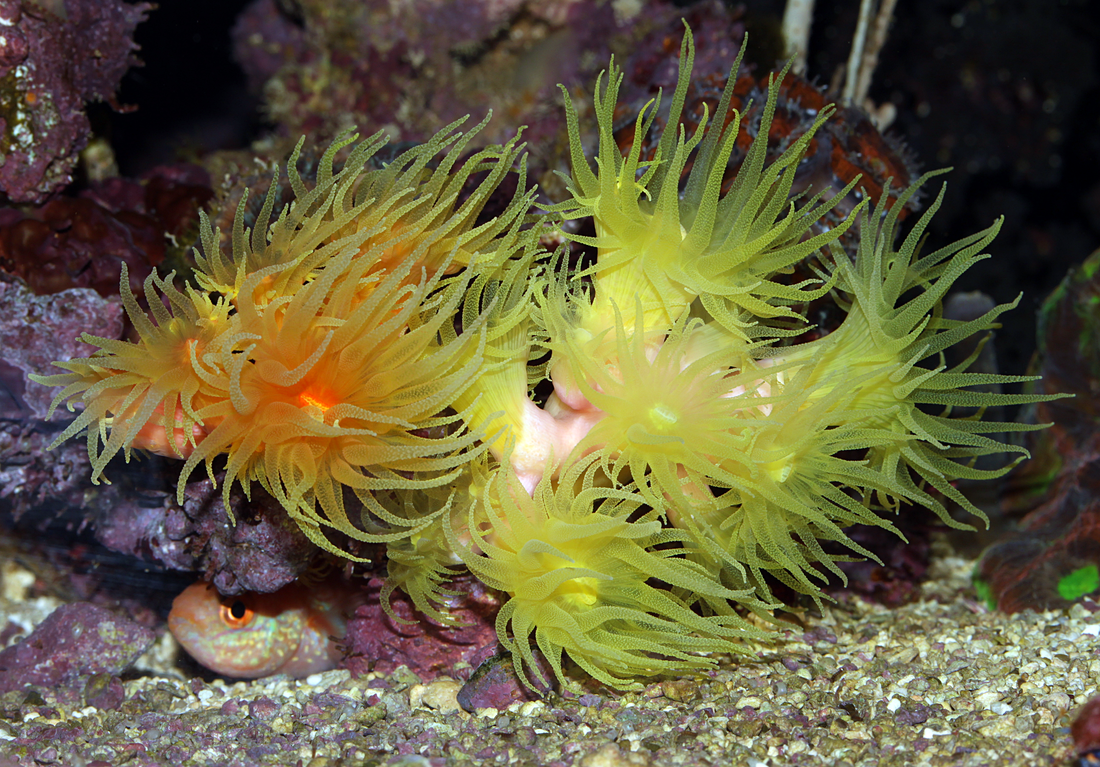
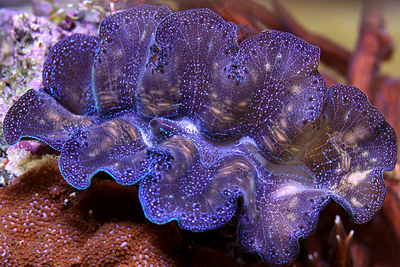
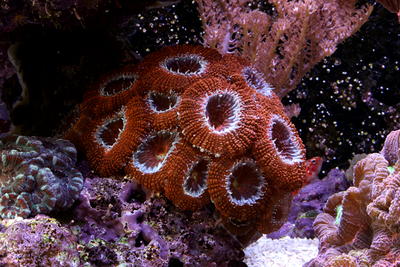

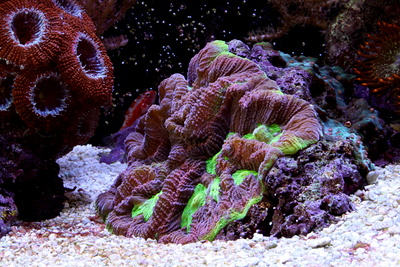
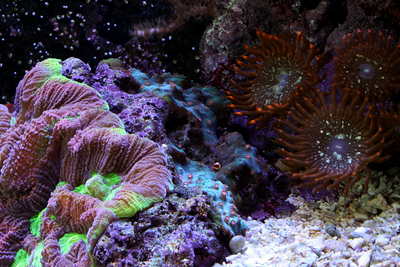
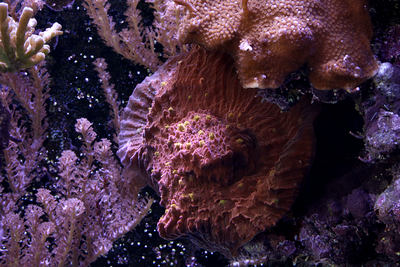
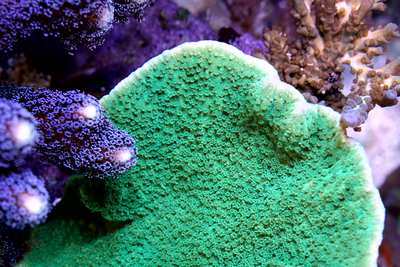

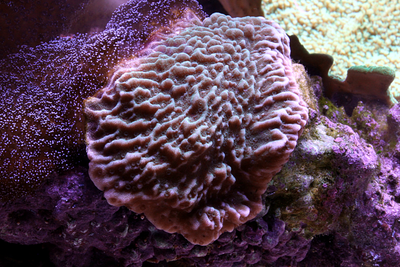
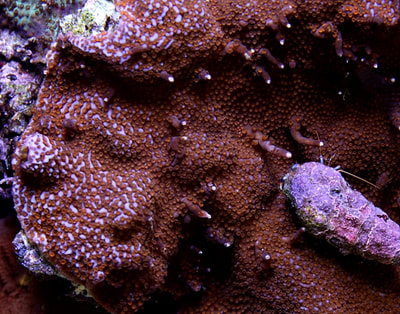
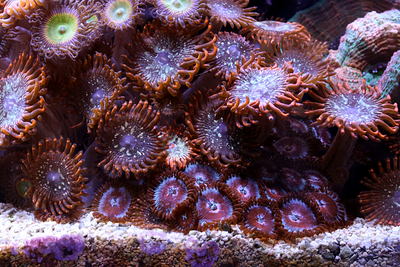
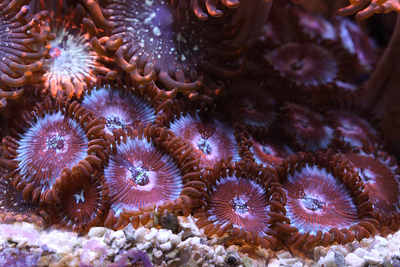
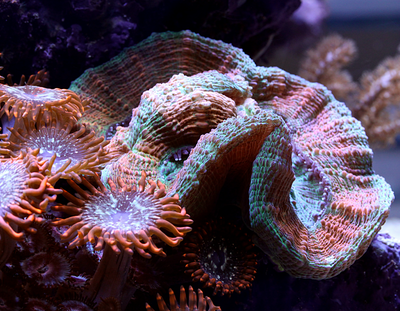
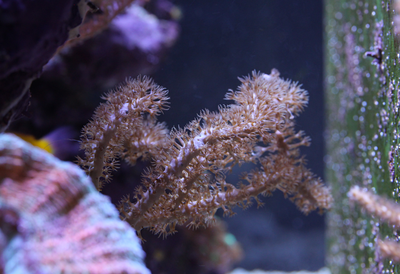

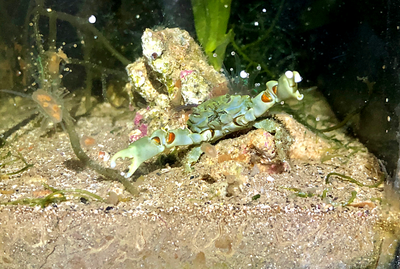
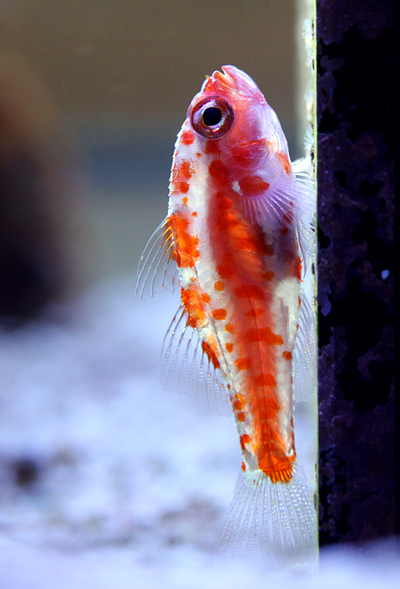
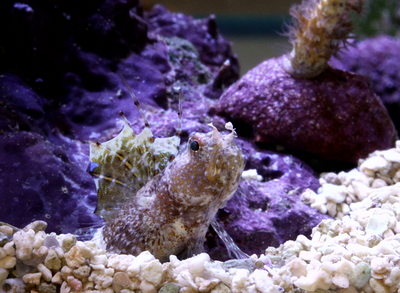

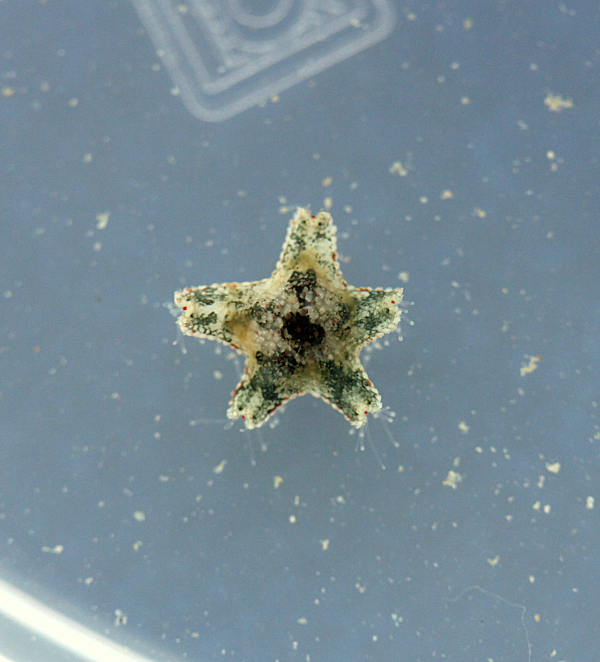
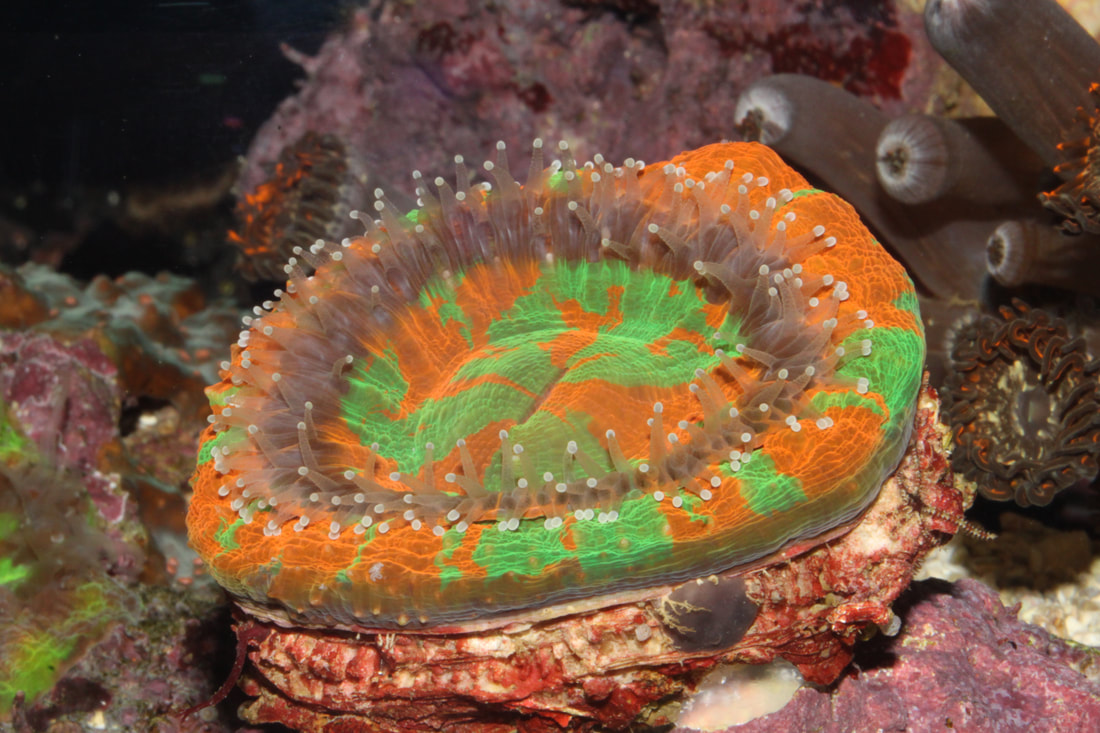
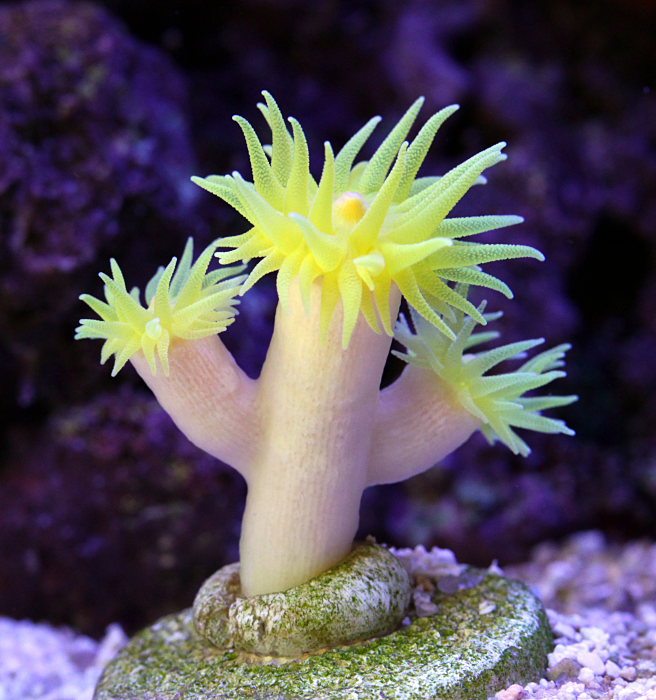
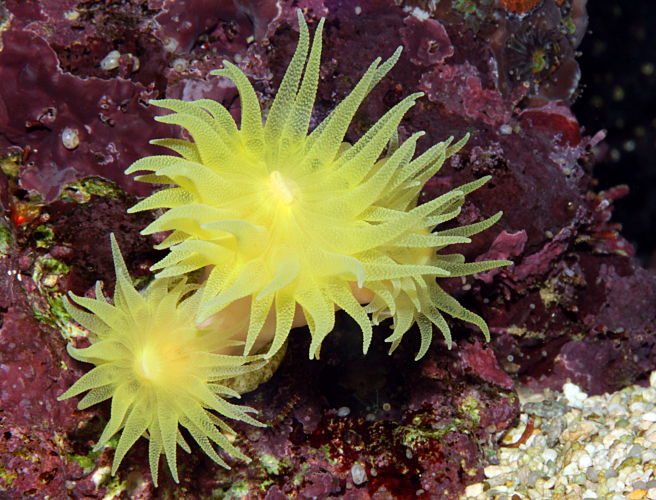
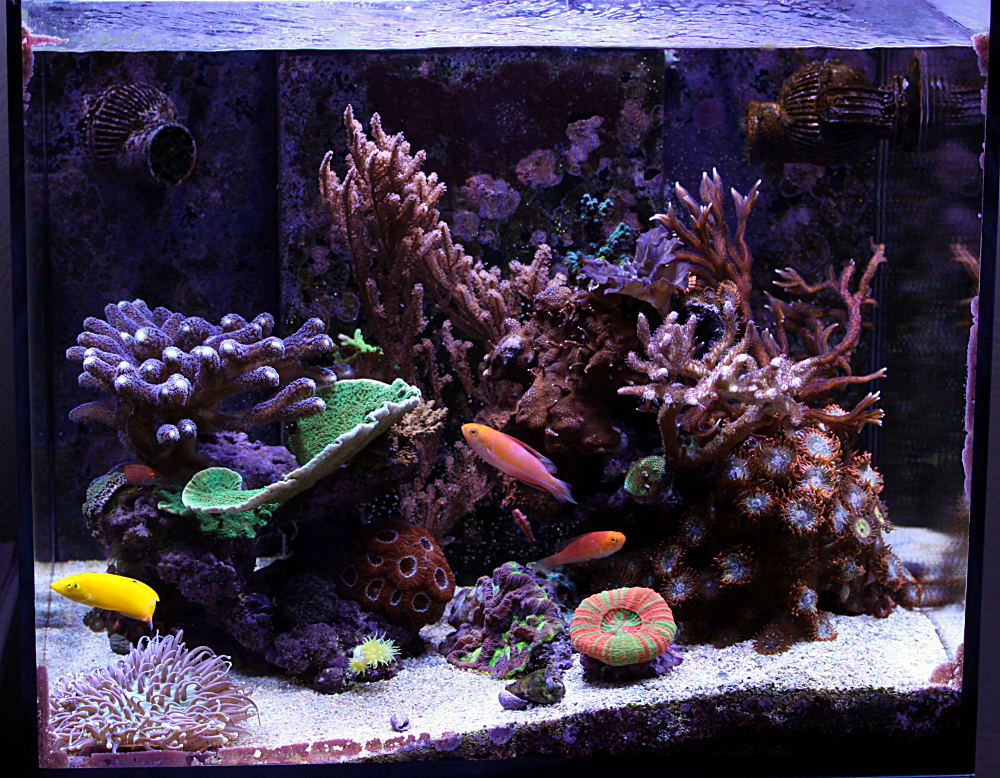
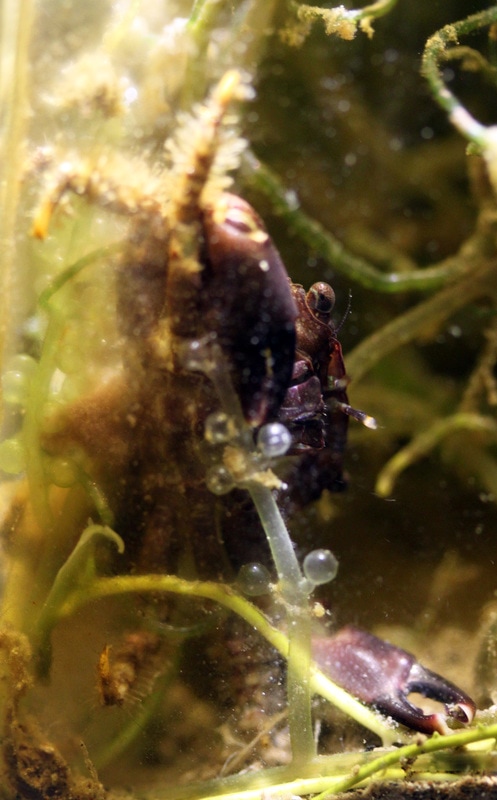
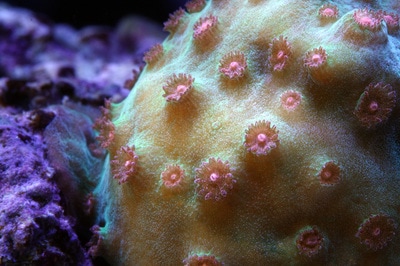
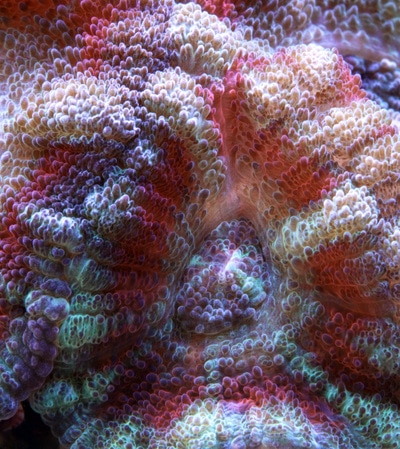
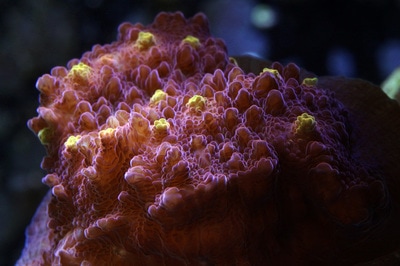
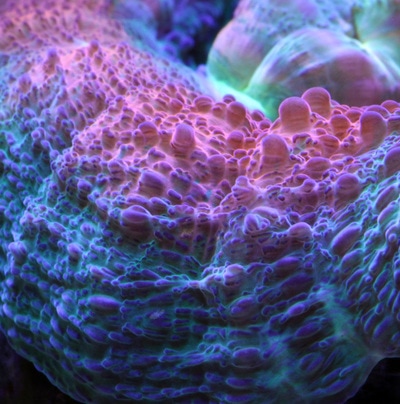
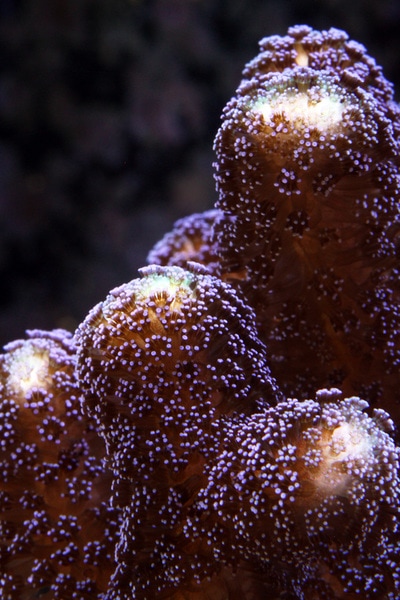
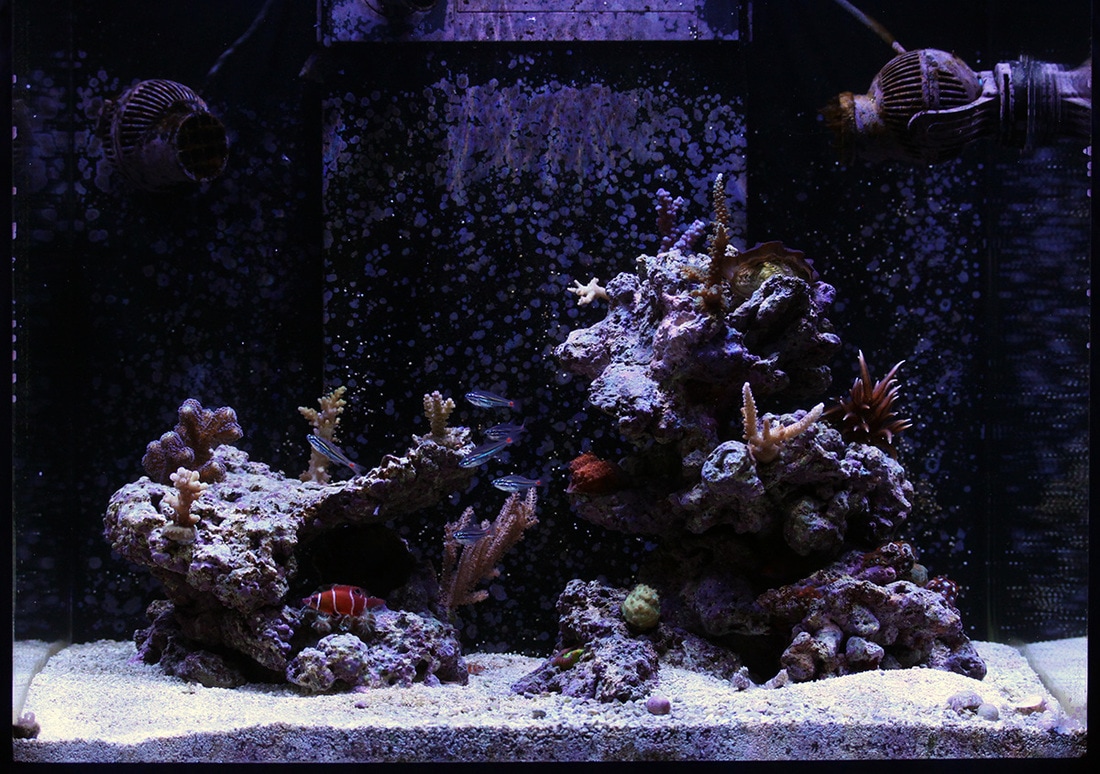
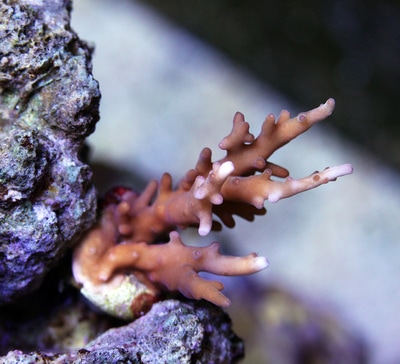
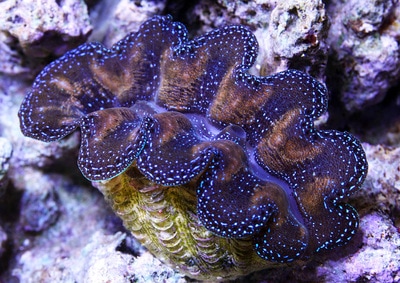
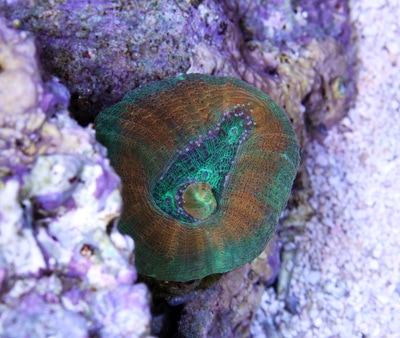
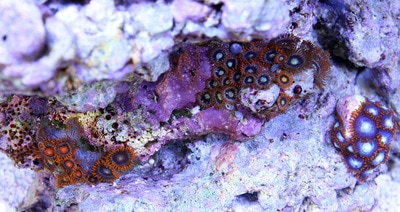
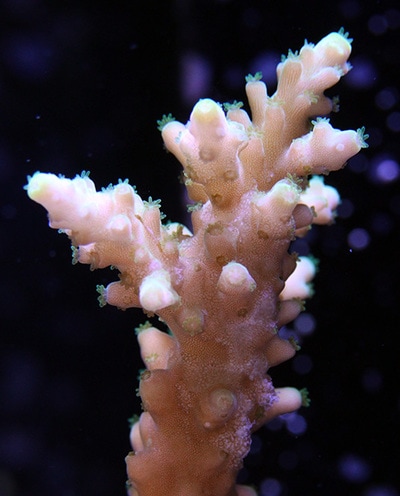

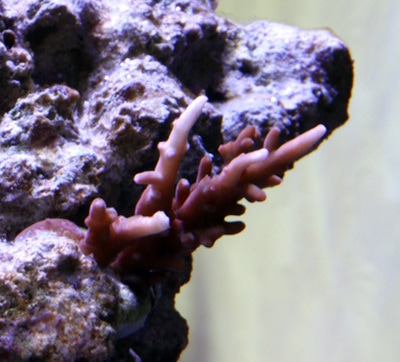
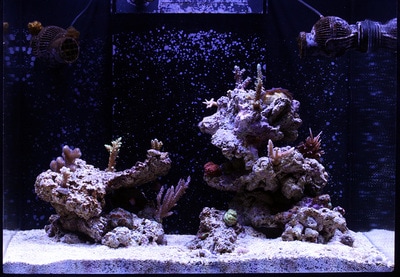
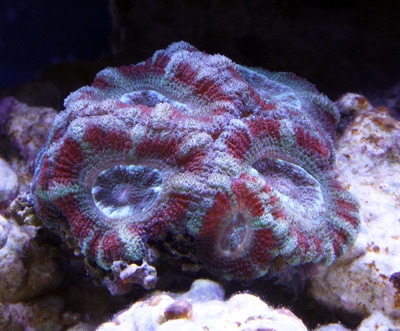
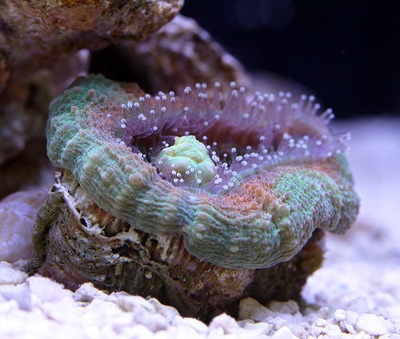
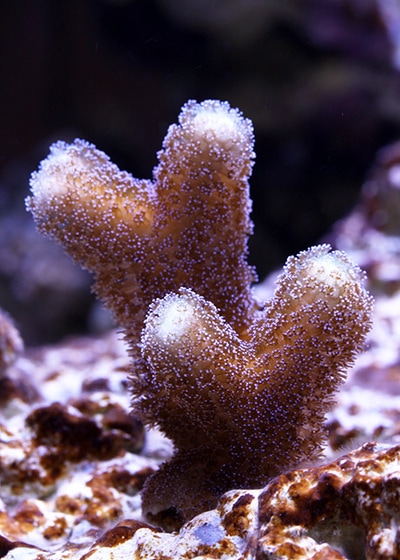
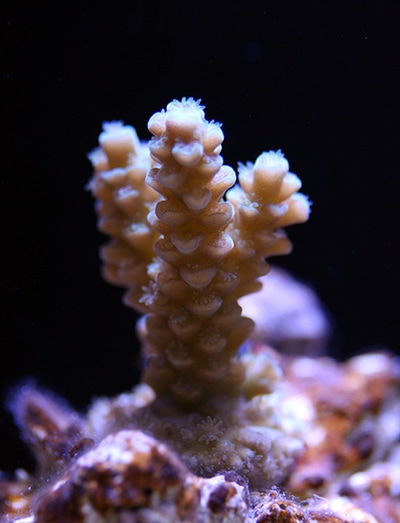
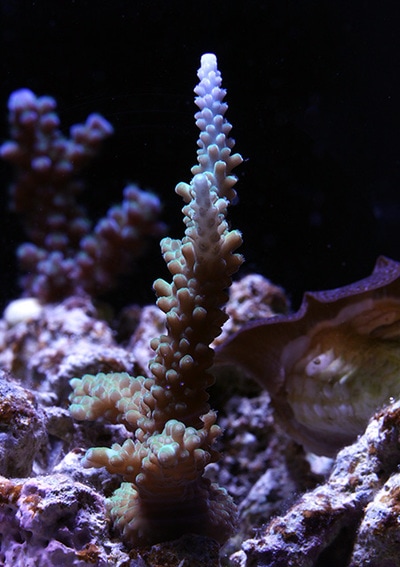
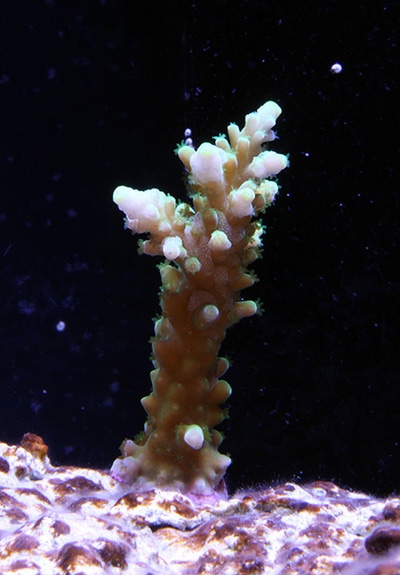

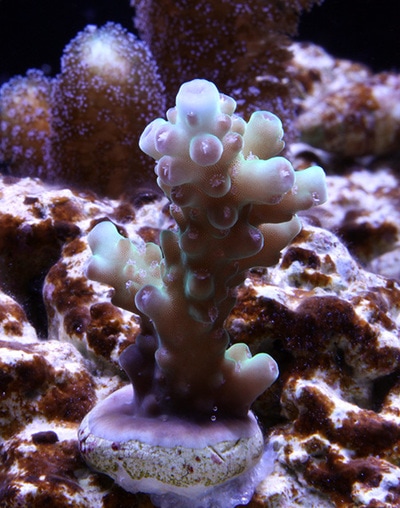
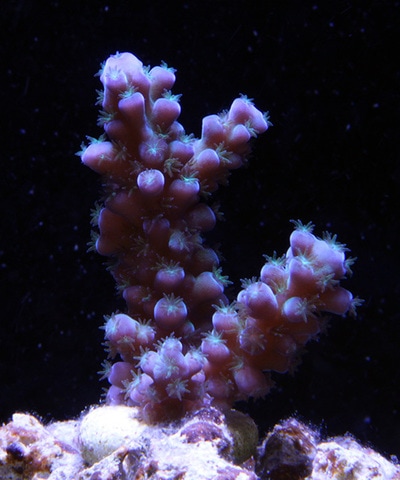
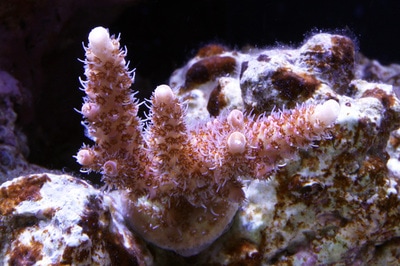
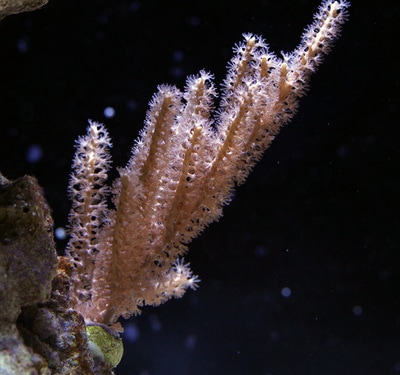
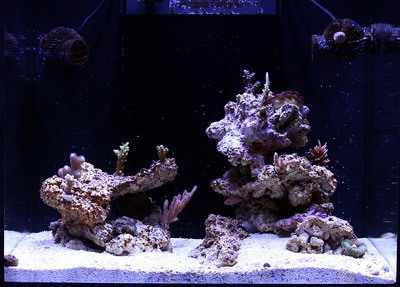
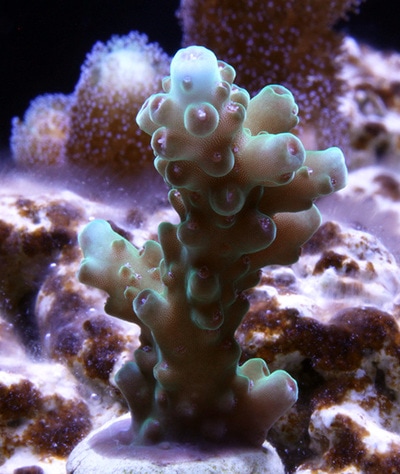
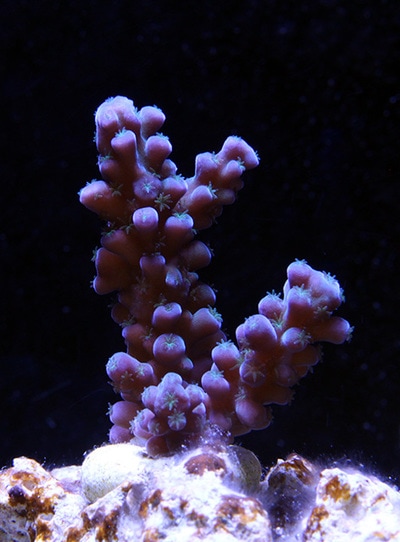
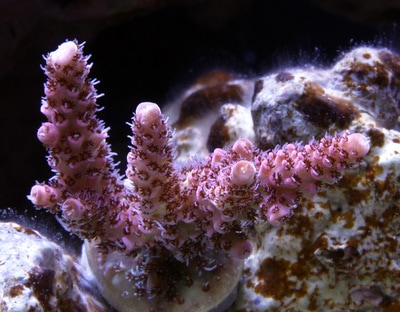
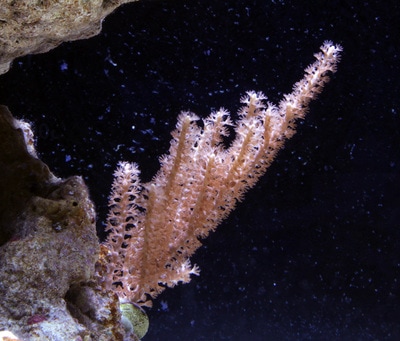
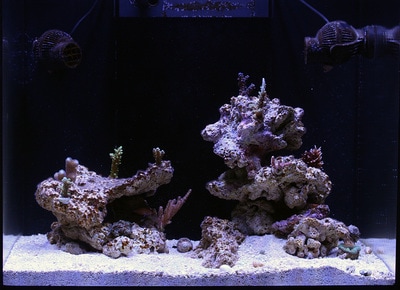
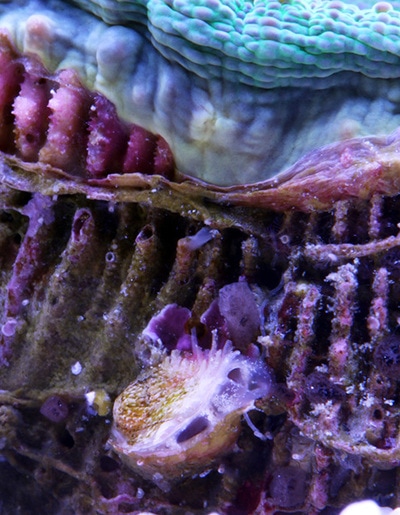
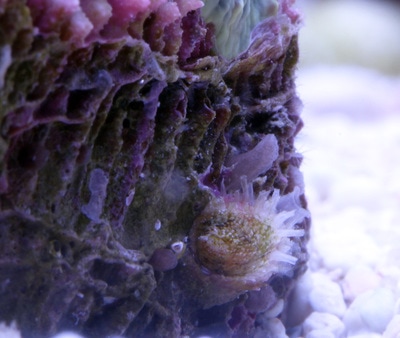
 RSS Feed
RSS Feed
